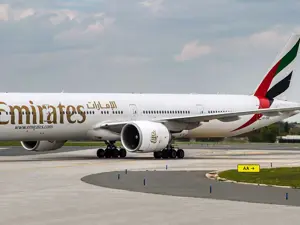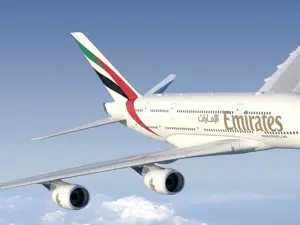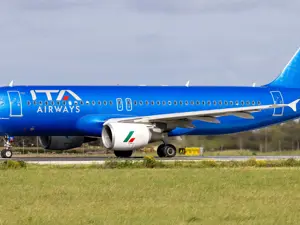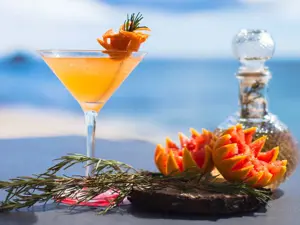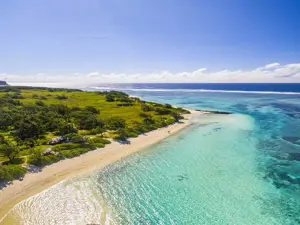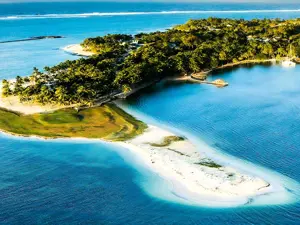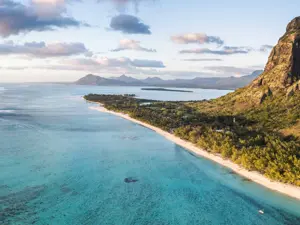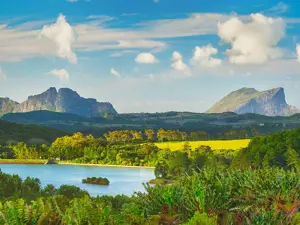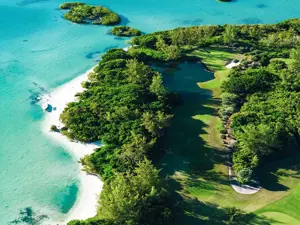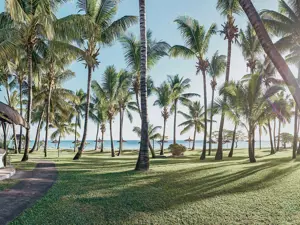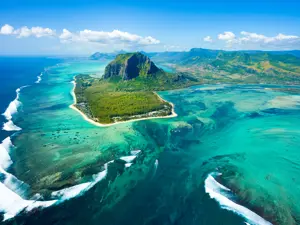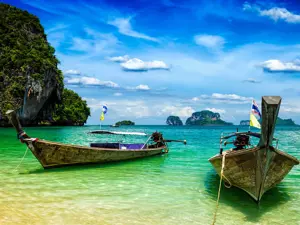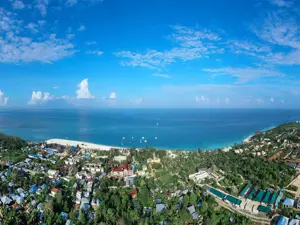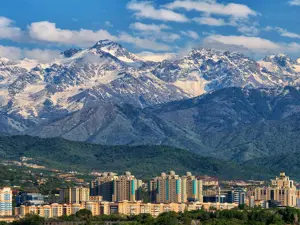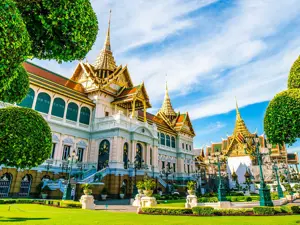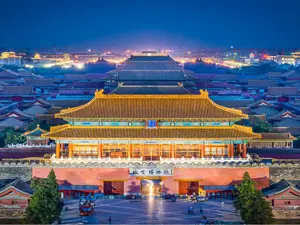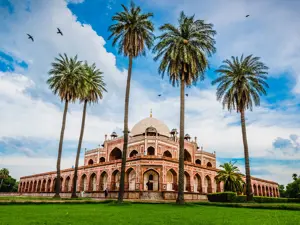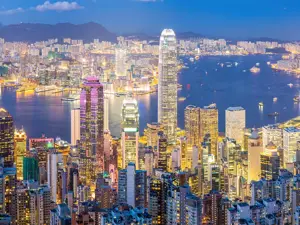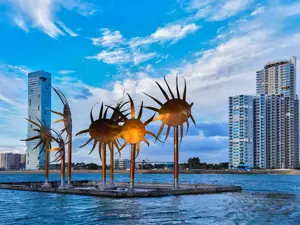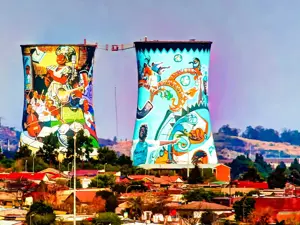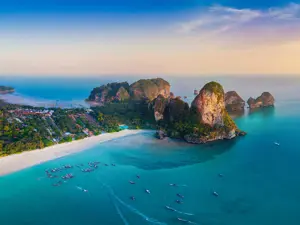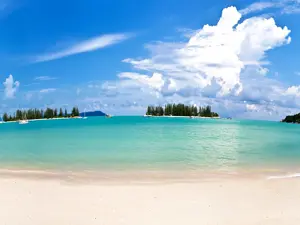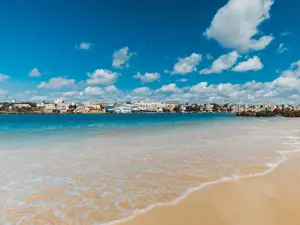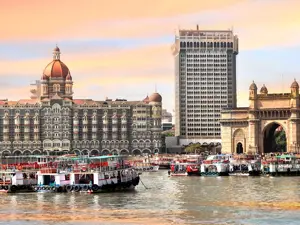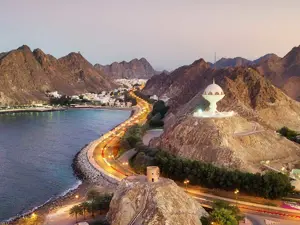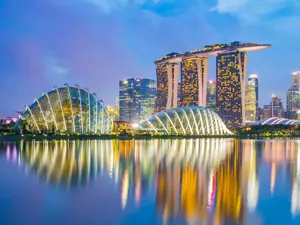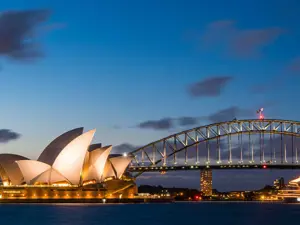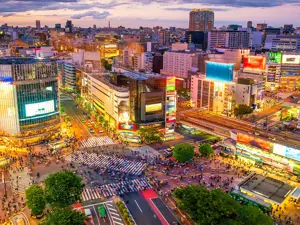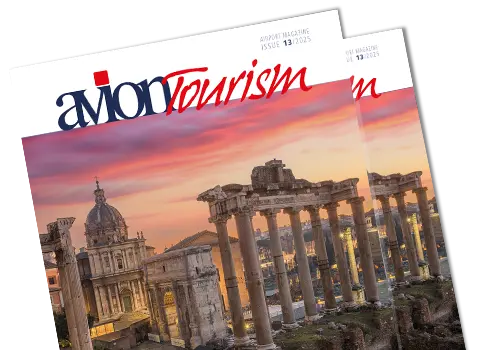A tropical paradise in the Indian Ocean between nature, culture and well-being
Between the deep echo of the Indian Ocean and the soft whisper of sugar cane in the wind, there is an island that cannot be told: you breathe, listen, dream. Mauritius, the pearl of the Indian Ocean located east of Africa and about 800 kilometers from Madagascar, fascinates with its volcanic landscapes, white beaches and the hospitality of a multicultural population. Part of the Mascarene Islands, which include 49 islets including Rodrigues Island, Île aux Cerfs and Île aux Aigrettes, the main island is a symphony of nature, culture and hospitality. With a tropical climate that maintains mild temperatures all year round (rarely below 22°C even during the winter, from May to October) Mauritius is an ideal destination in any season and the best time to visit is between April and December.
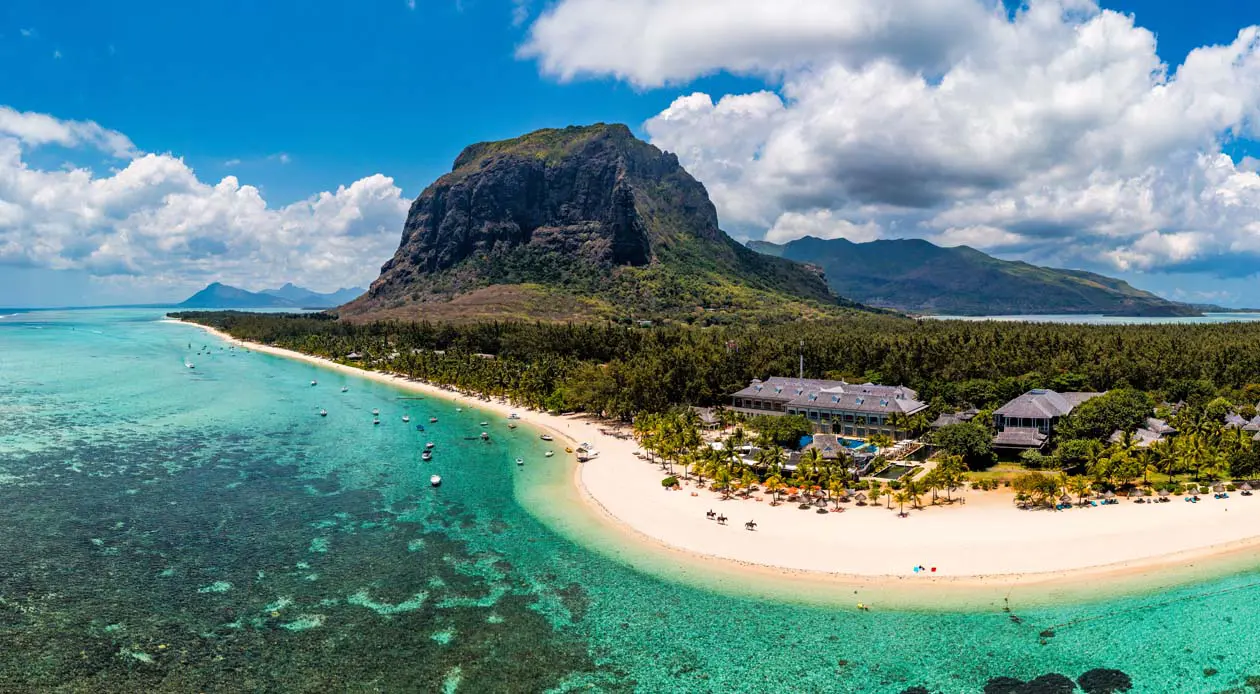
Among the population there is a harmonious coexistence of Hinduism, Islam and Christianity that testifies to a deep religious tolerance, while English, French and Creole are the languages spoken in daily life. A place where you feel understood and warmly welcomed.
The island offers a wide choice of immersive experiences to be fully enjoyed: water sports, golf (with eleven courses available), nature excursions, cultural trails, spa treatments, yoga on the beach, tai chi in the forest and moments of relaxation also designed for honeymooners and families.
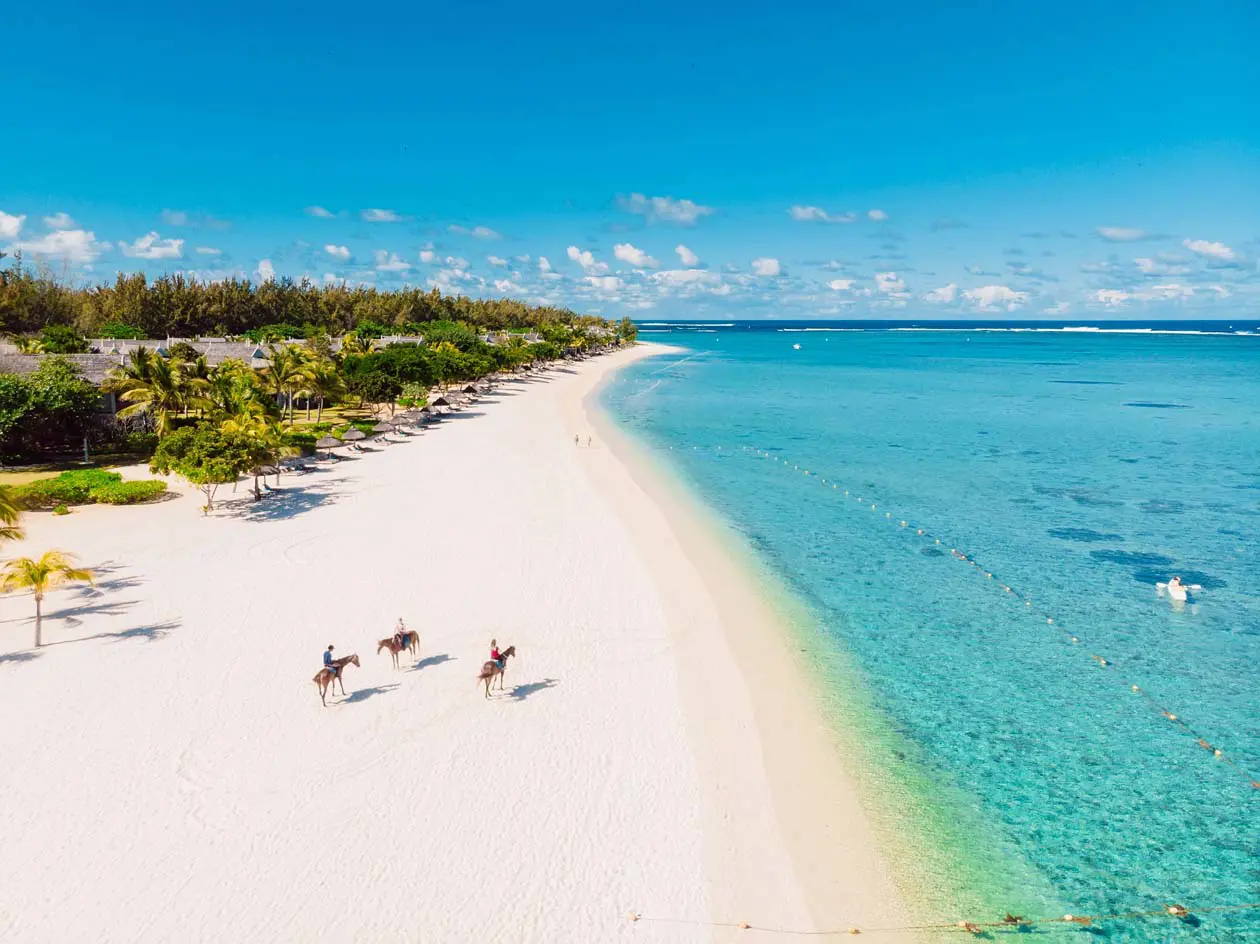
The 6 characteristic areas of Mauritius
With small dimensions, Mauritius can be crossed in just over an hour by car from coast to coast, passing through fishing villages, parks, mountains and the beautiful capital Port Louis. The island is ideally divided into six distinct areas, each with its own identity: North, East, South, West, Center and, of course, Port Louis.
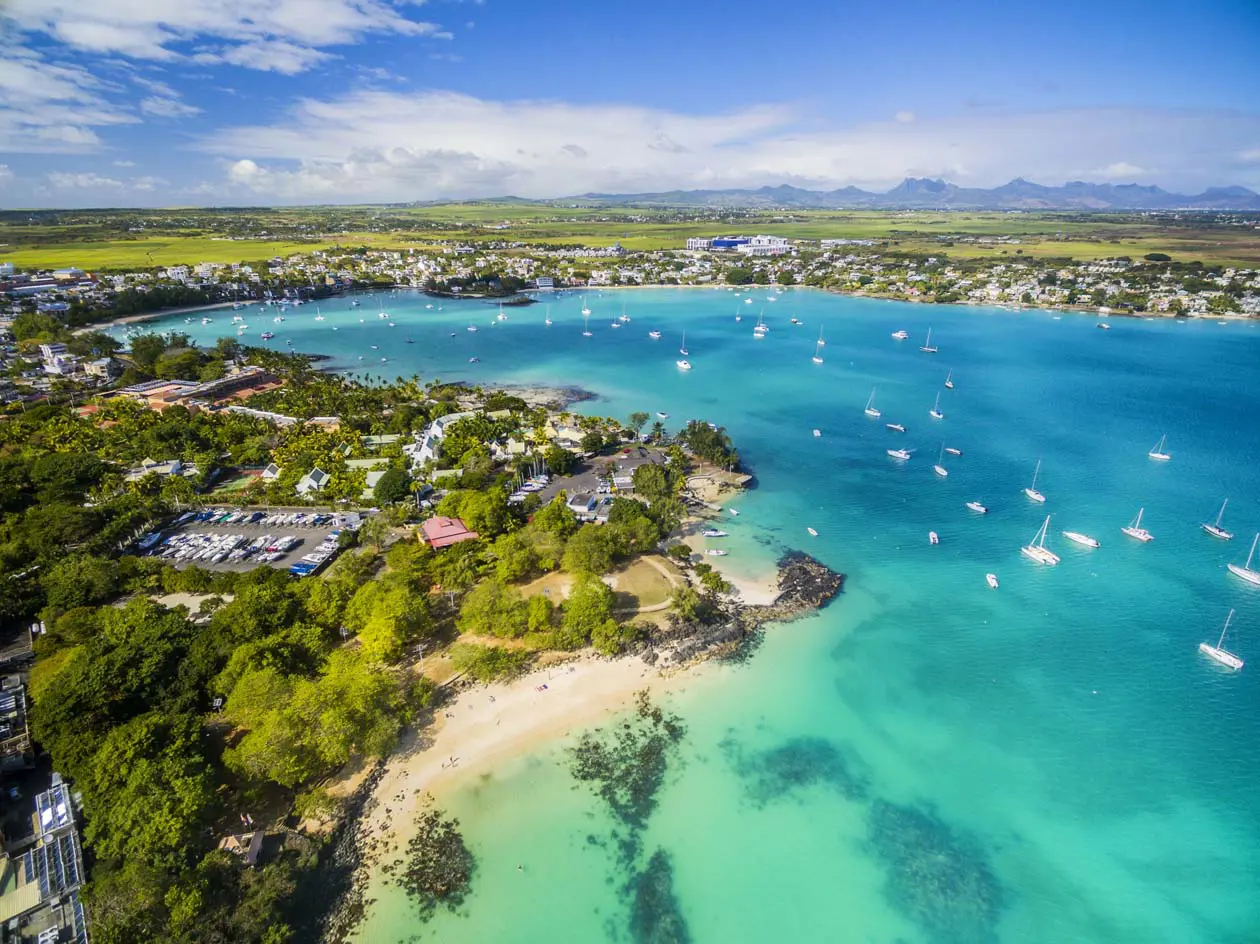
The North of Mauritius
The North of Mauritius is the liveliest area, animated by typical and modern bars, restaurants and nightclubs concentrated mainly in Grand Baie. The beaches overlooking the northern islands of Mauritius offer calm waters, ideal for water sports and boat or catamaran trips.
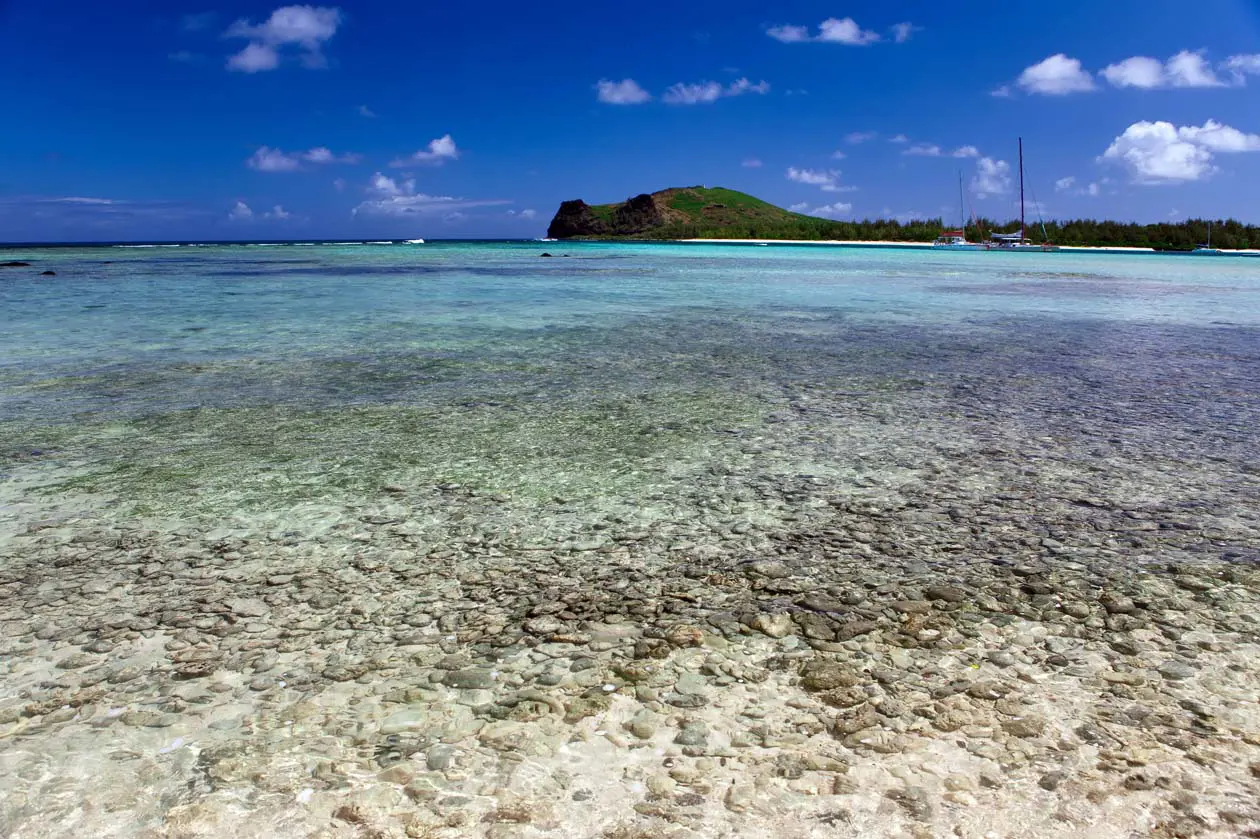
Very beautiful to visit is the island of Ile aux Gabriel, famous for its particular strip of white beach and turquoise water but also Coin de Mire, where you can go snorkeling.
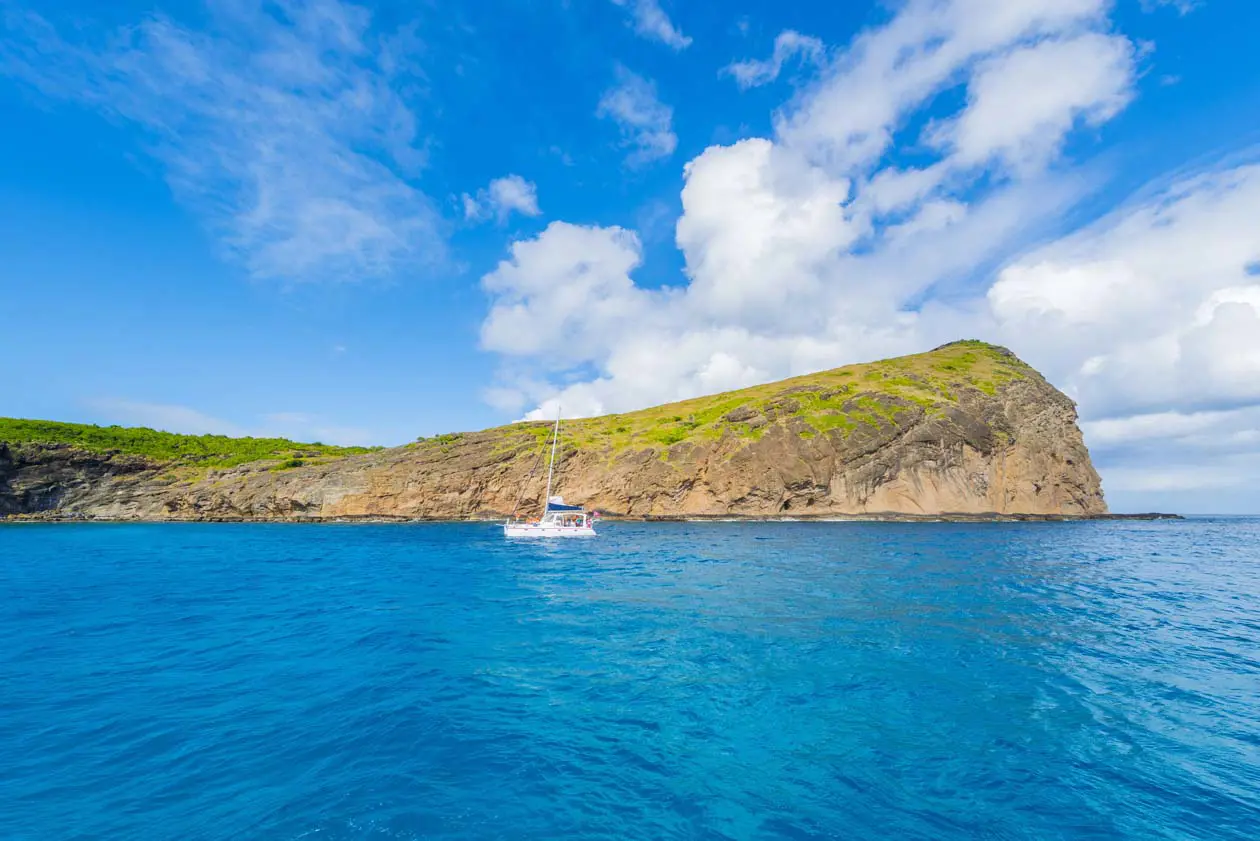
The East of Mauritius
The east of the island of Mauritius is quieter and more unspoiled. Here stretches the long beach of Belle Mare, ideal for those seeking relaxation, diving, snorkeling or kitesurfing thanks to the constant breeze.
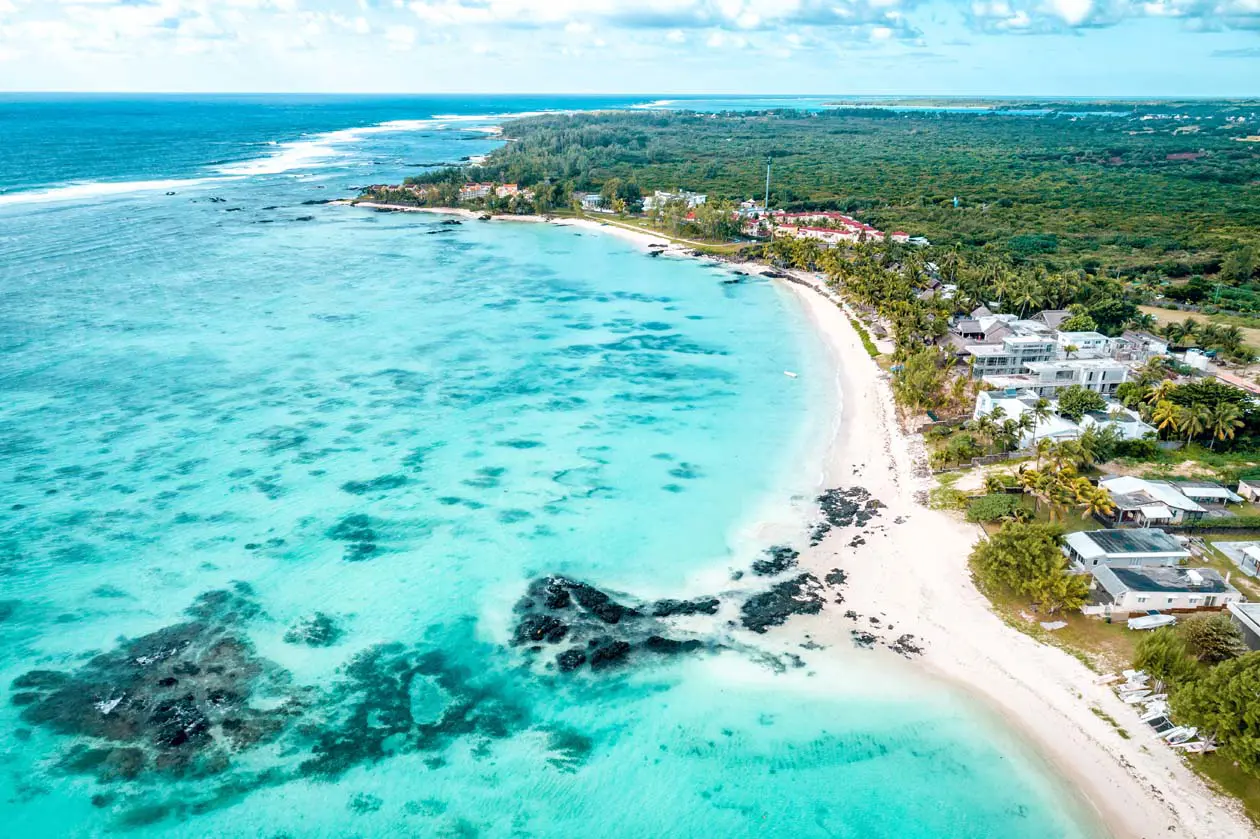
Belle Mare Beach is located near the city of Mahébourg with its lively local markets. North of Mahébourg, you can also visit the Vallée de Ferney, a forest and wildlife reserve in the Bambou mountain range.
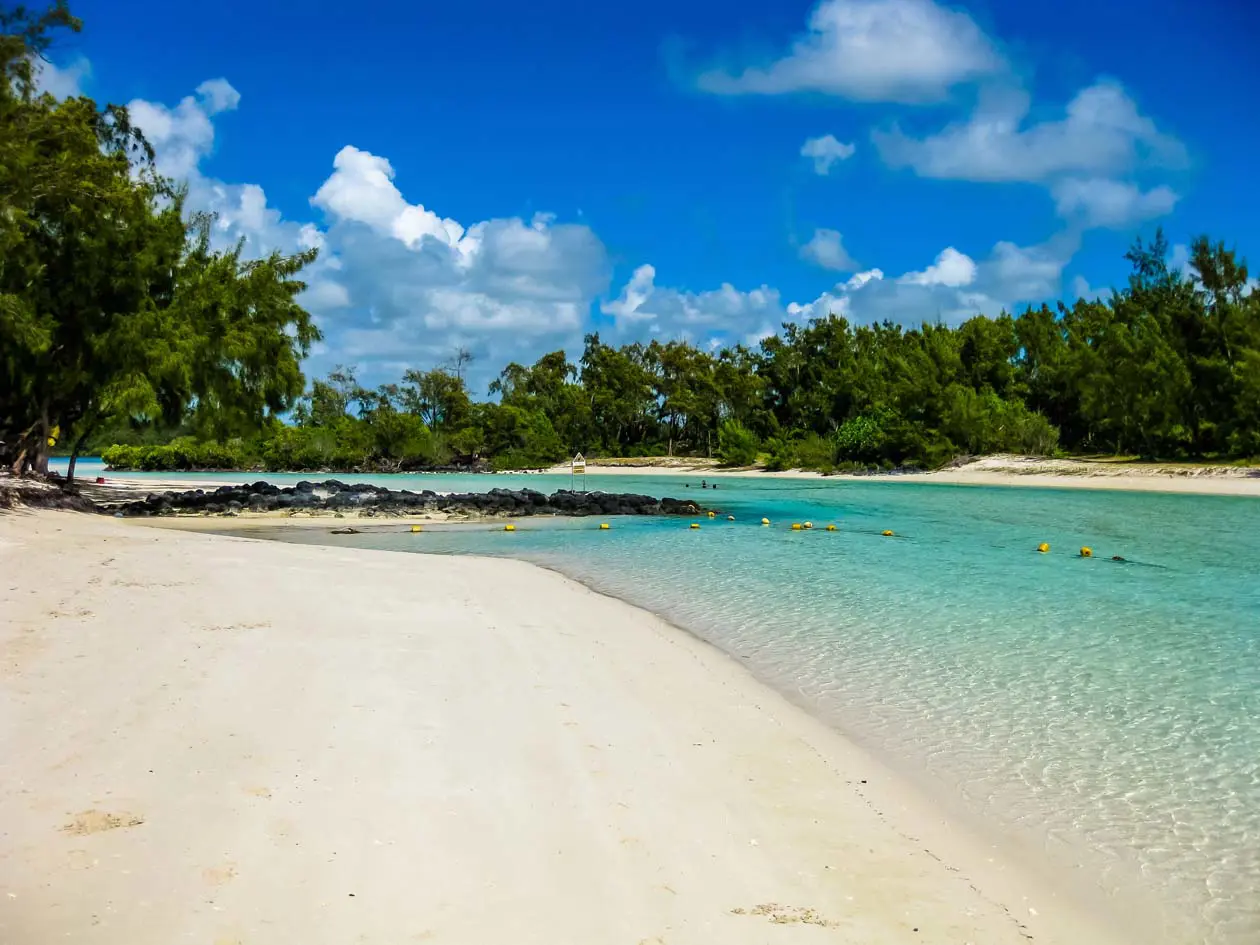
To the southeast, near the village of Cluny, is the Eau Bleue waterfall, where you can dive into a hidden paradise surrounded by sugar cane fields. In addition, beautiful lagoons and beaches also in the enchanting Île aux Cerfs which is home to a 19-hole golf course designed by Bernhard Langer: a private island reachable by boat or catamaran for an oasis of rare beauty. And for a fish dinner, a visit to Trou d'Eau Douce, the fishing village with restaurants that prepare the catch of the day, is a must.
The South of Mauritius
The South of Mauritius stands out for its wild landscapes: cliffs of volcanic rocks, fishing villages, secluded beaches such as Pomponette and Riambel, and natural attractions such as the Rochester Falls.
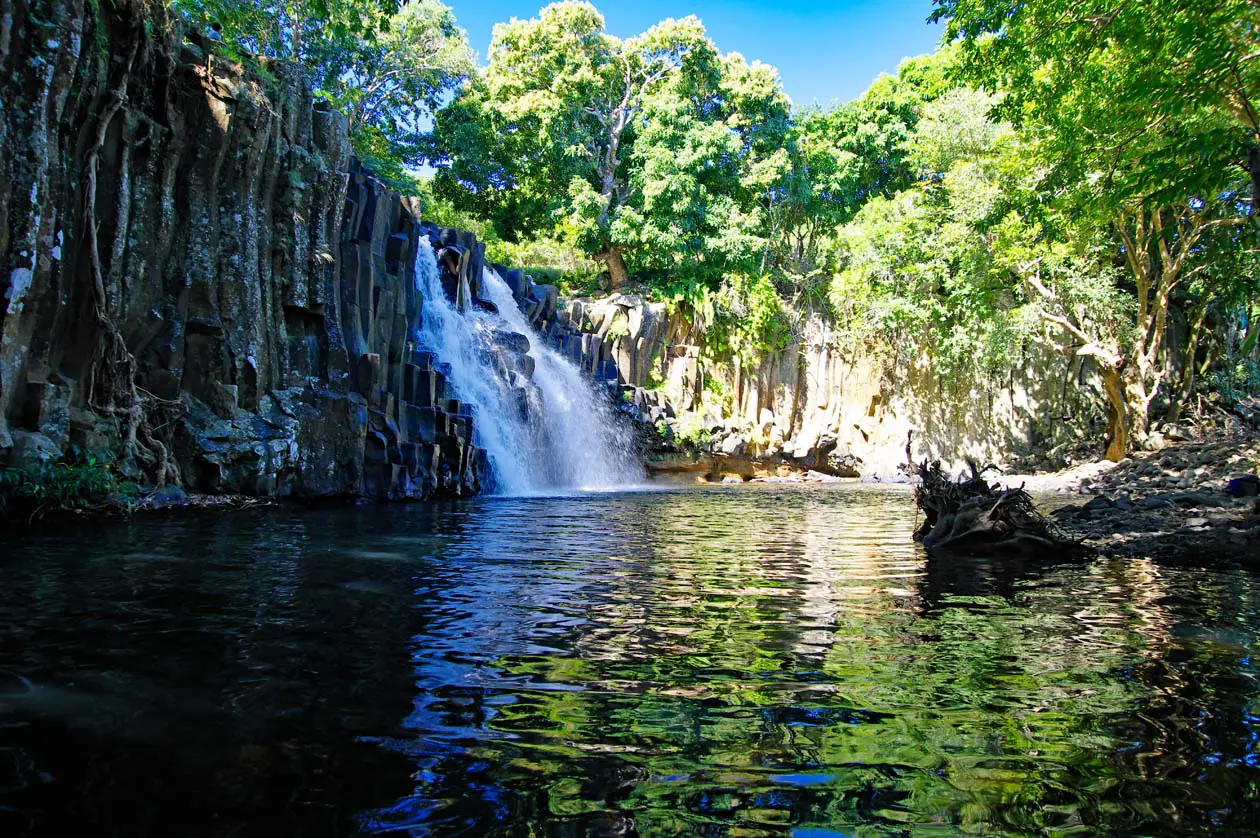
Here the beach of Bel Ombre is white sand surrounded by a green forest, perfect for swimming in the turquoise blue sea and where you can also visit the Shell Museum of Africa. In the mountains of Savanne, do not miss the sacred lake Ganga Talao, an important Hindu pilgrimage site Maha Shivaratri dominated by the majestic 33-meter-high statue of Shiva.
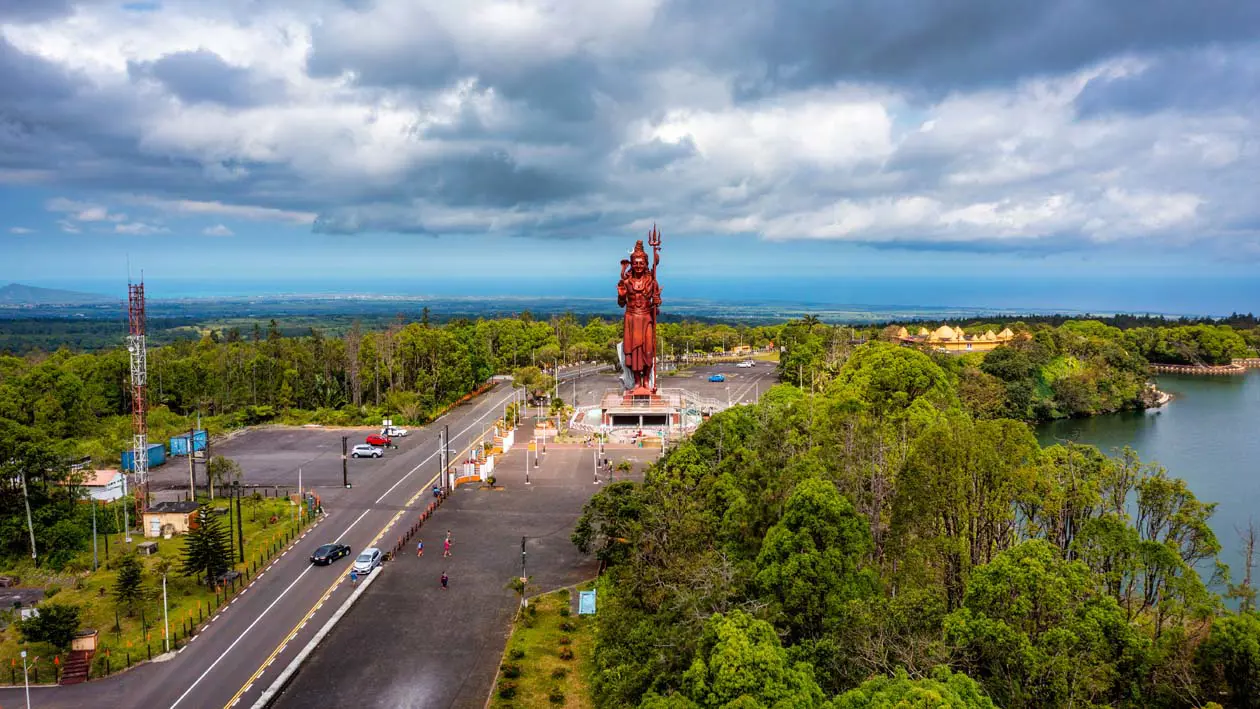
On the south-eastern coast, Île aux Aigrettes, an islet surrounded by an ebony forest inhabited by rare species in a Nature Reserve, is also worth a trip. While, in Rivière des Anguilles near Souillac you can take a dip in the La Cascade Léon waterfall while at the Blue Bay Marine Park you can admire the seabed, tropical fish, turtles and dolphins in one of the best snorkeling spots on the island.
The West of Mauritius
The West of Mauritius is the kingdom of sunset, cocktails sipped by the sea and iconic landscapes. Here you will find the Black River Gorges National Park, loved by hikers for the variety of flora and fauna (monkeys, flying foxes, wild boars, macaques, deer, etc...), the Chamarel waterfall, the suggestive uninhabited island Île aux Bénitiers and the nearby Crystal Rock for fascinating diving and snorkeling.
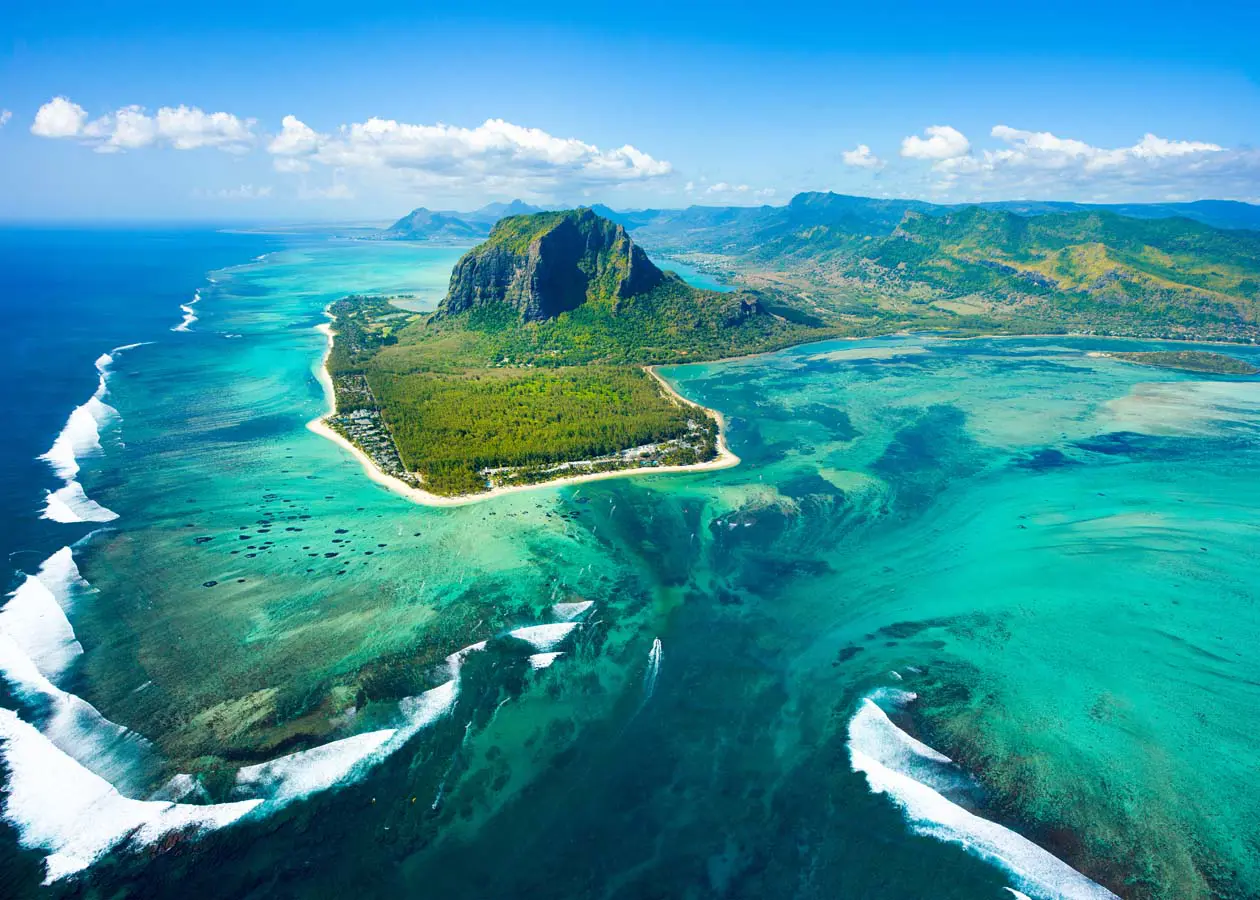
To the west also stands the iconic mountain of Le Morne Brabant, a UNESCO World Heritage Site, once a refuge for runaway slaves (18th-19th centuries), and today a universal symbol of freedom. With an expert guide, it is possible to climb it in three hours of trekking, retracing its history between emotion and panorama. The mountain also frames the white sand beach of Le Morne where you can practice kitesurfing in the One Eye area in Pointe du Morne.
The Mauritius Centre
Inland, the center of the island of Mauritius offers historic mansions, shopping malls (Bagatelle Mall) and hiking trails to the mountains, such as the one to Mount Le Pouce (3-4 hours round trip, following in the footsteps of Charles Darwin up to 812 meters) with spectacular views of Port Louis, or the one to Mount Pieter Both, one of Mauritius' most iconic mountain peaks in the Moka mountain range. Golf enthusiasts can play at the historic 18-hole Gymkhana Club Golf Course . While, history lovers can visit the Eureka House Museum in the village of Moka, an 1836 house with period furniture and antiques. Finally, to enjoy a beautiful view of the island, you will reach the crater of the Trou aux Cerfs volcano with a small lake in the center.
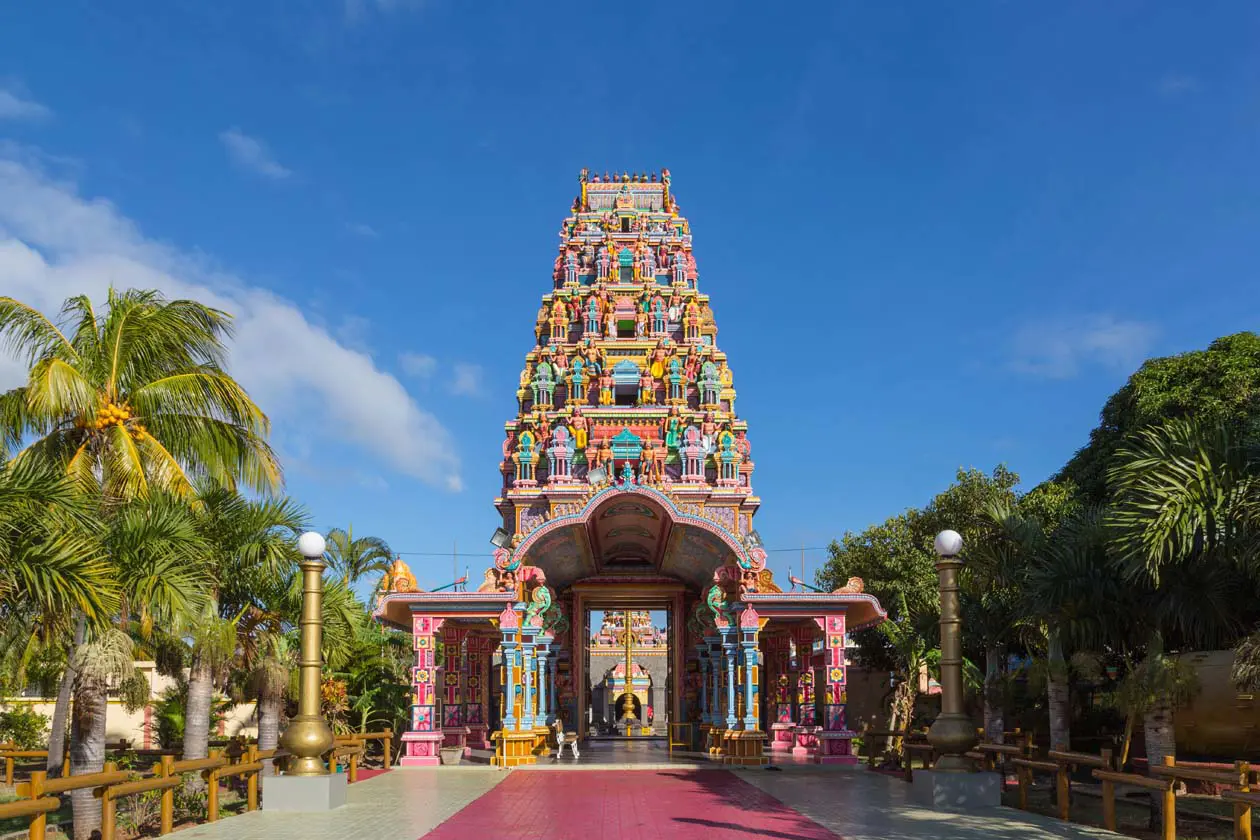
The capital Port Louis
The capital Port Louis, in the northwest of the island, is a fascinating mix of colonial past and modernity: historical monuments, parks, authentic markets and shopping malls. A few steps from the Caudan waterfront and close to Chinatown, the Central Market of Port Louis is the beating heart of the city, with fruit and vegetable stalls and, just outside, handicrafts where you can buy handmade ship models, bags and baskets in vacoas and vetiver or other strictly 'Made in Moris' souvenirs.
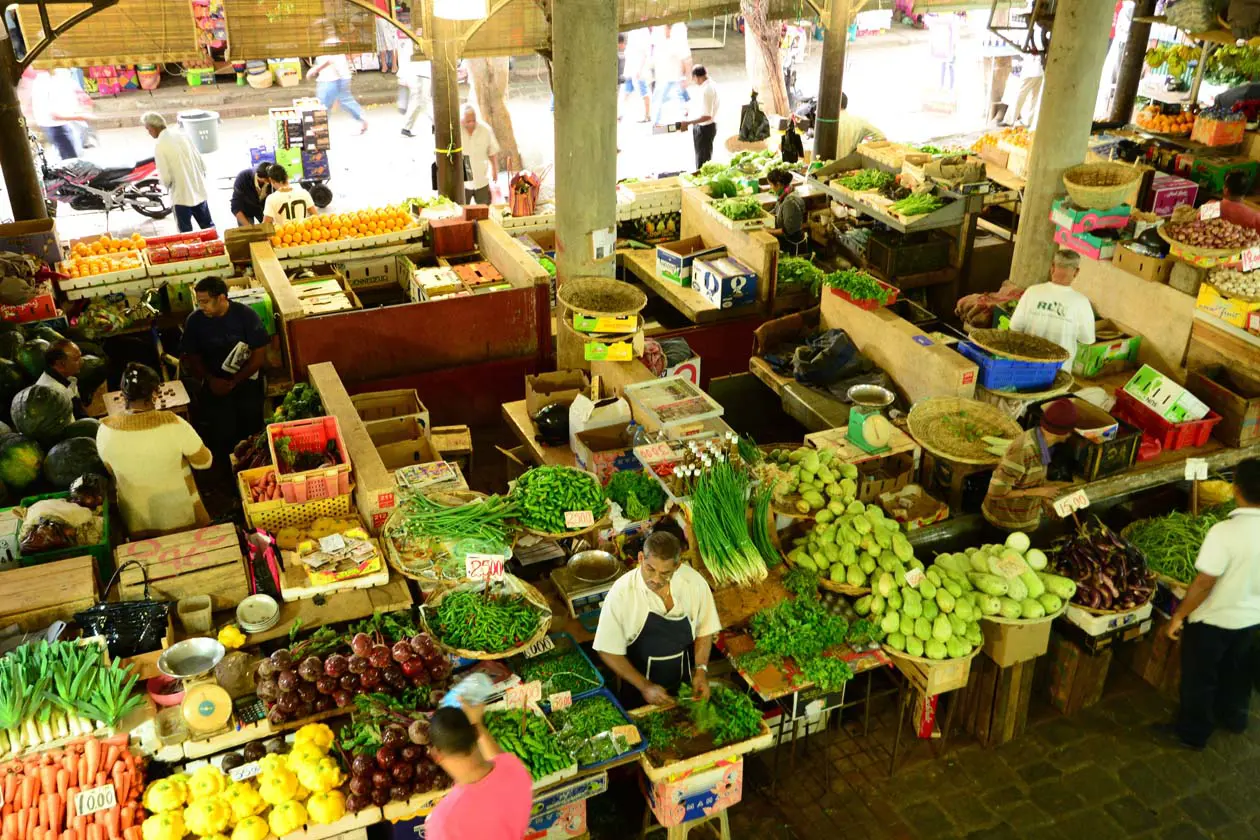
In the market, the tasting of typical Mauritian street food is also a must. Close to the waterfront and the Central Market of Port Louis, you will then visit the colorful Chinatown district with narrow streets, shops, restaurants and the famous street art in Royal Road, Emmanuel Anquetil and Venpin Street.
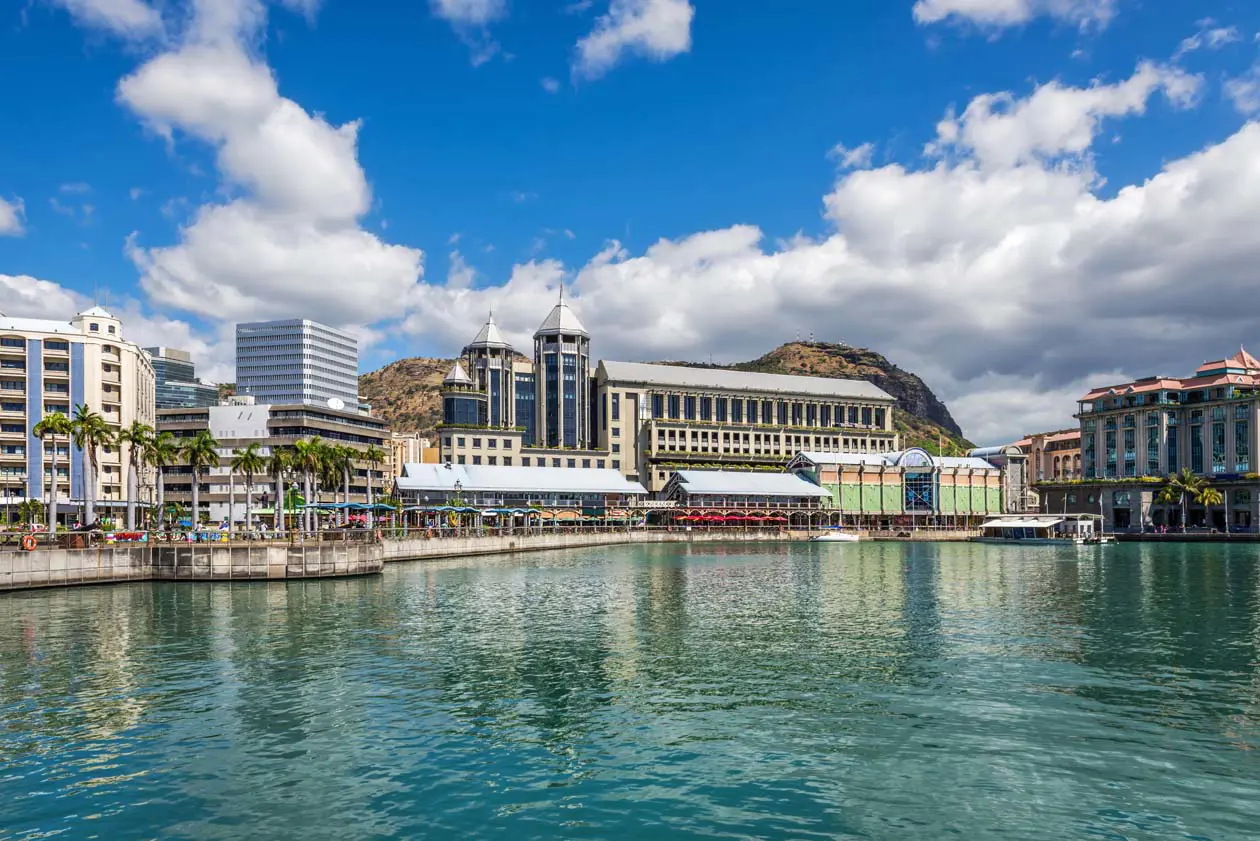
Among the unmissable destinations of the capital are the city's waterfront, with avenues full of shops and boutiques where you can shop, and the Caudan Arts Centre, home to exhibitions, theatre performances and concerts. Also worth a visit is the colorful 1842 Kwan Tee Pagoda, built by the Chinese community, which pays homage to Kwan Tee, god of war, wealth and righteousness.
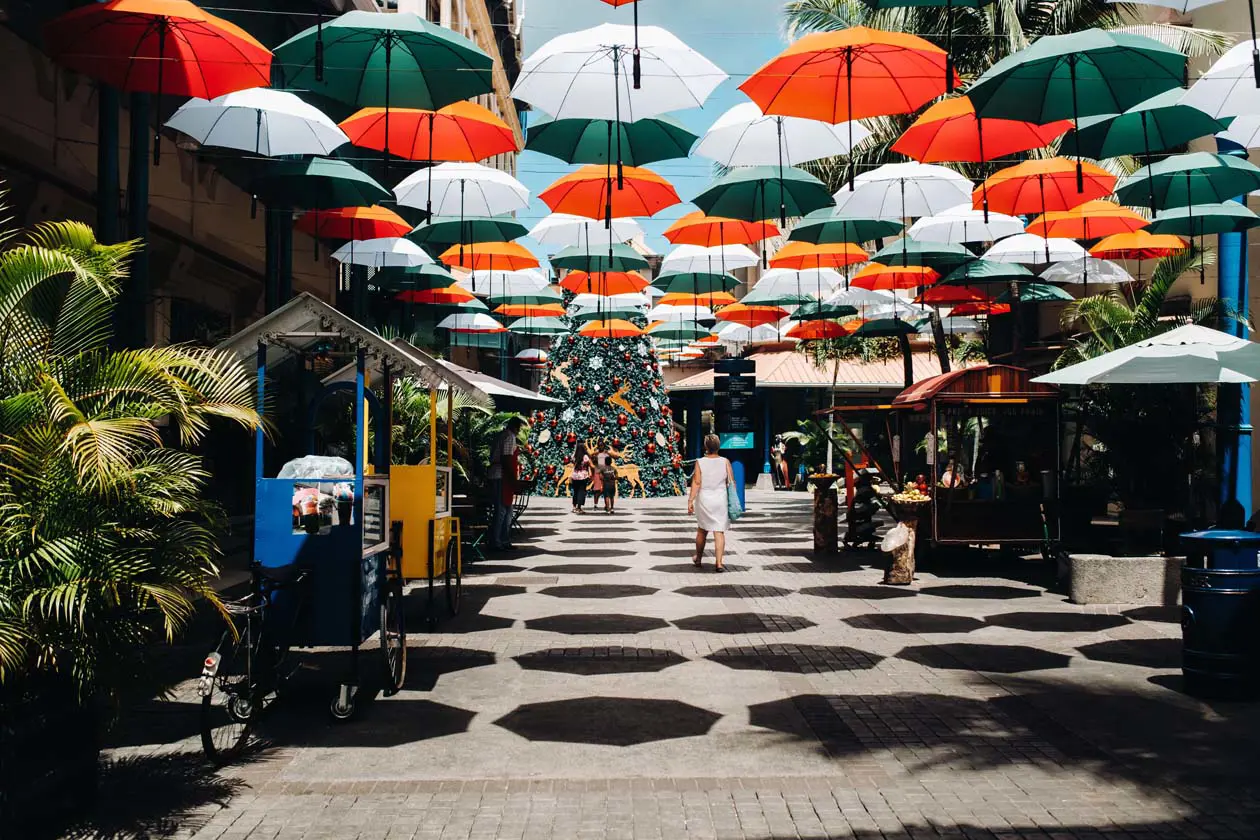
To learn more about Mauritian history, you can visit the Natural History Museum, the Blue Penny Museum with its rare stamps and the Aapravasi Ghat, a UNESCO World Heritage Site, to learn about the history of Indian indentured workers who arrived in Mauritius after the abolition of slavery. Also not to be missed are the traditional Sega dance and Geet Gawai, included in the UNESCO Intangible Cultural Heritage of Humanity list.
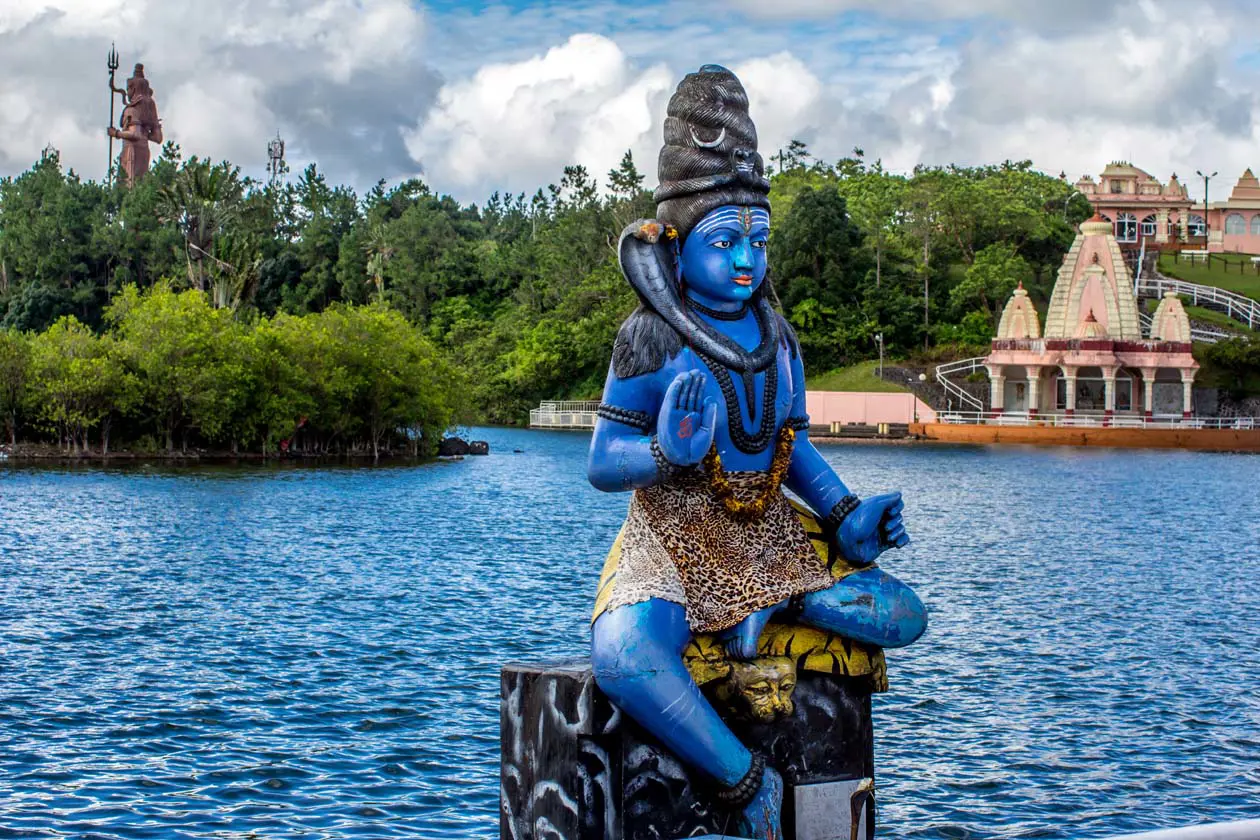
The most significant architectures
The religious and colonial architecture of the island is a reflection of its past: from the small church of Notre Dame de l'Auxiliatrice in Cap Malheureux on the promontory of Le Coin de Mire with its characteristic red roof, to the temples of Sri Prasanna Venkateswara and Maheswarnath Mandir in Triolet in honor of the god Shiva, to the pagoda of Kwan Tee to the temple of Ganga Talao to the sacred lake in the mountains of Savanne.
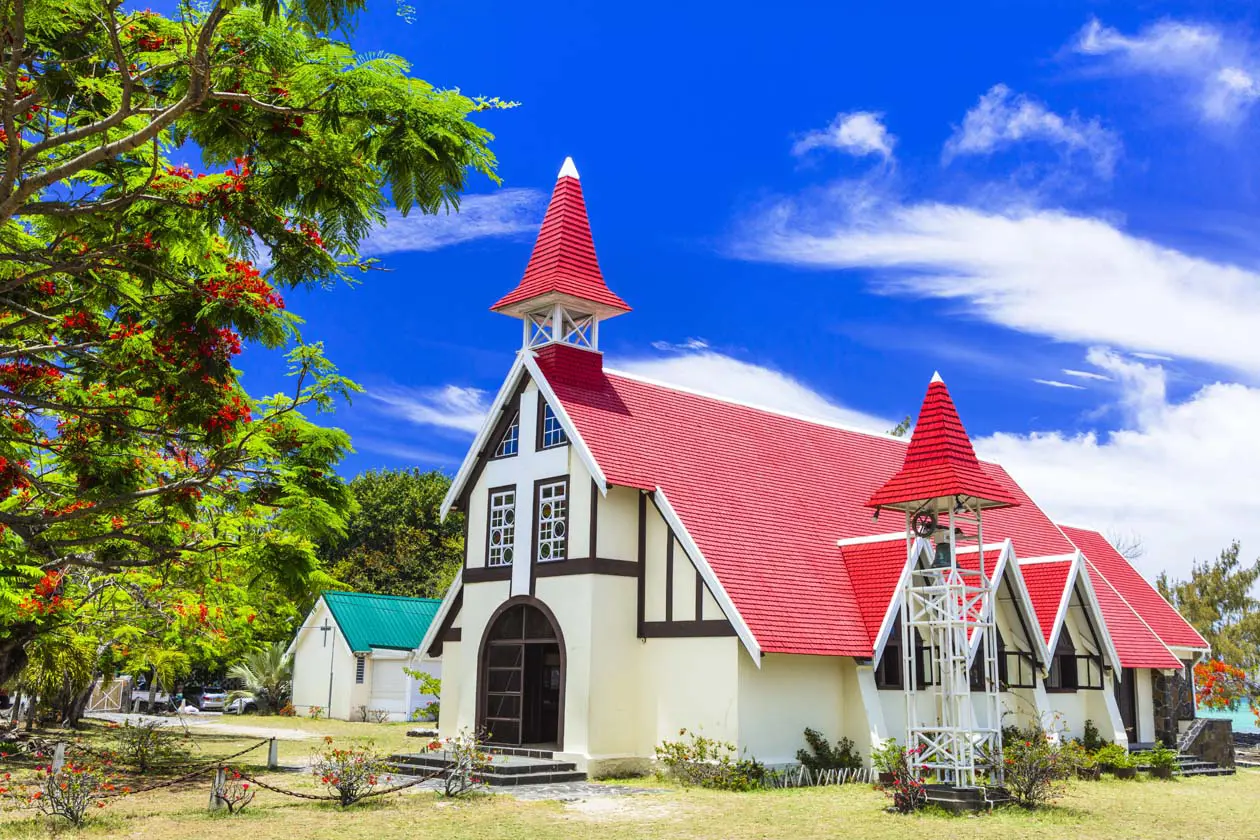
But also in Sainte-Croix, a suburb of the capital Port Louis, you can admire the Indian architecture of the Shri Sockalingum Meenatchee Ammen Kovil, a sanctuary of Tamil spirituality or the Labourdonnais Castle (Château de Labourdonnais) in Mapou, built between 1856 and 1859 and inhabited by a Mauritian family for over 150 years, used as a museum with restaurant and café to taste dishes prepared with ingredients collected directly from the crops of the estate.
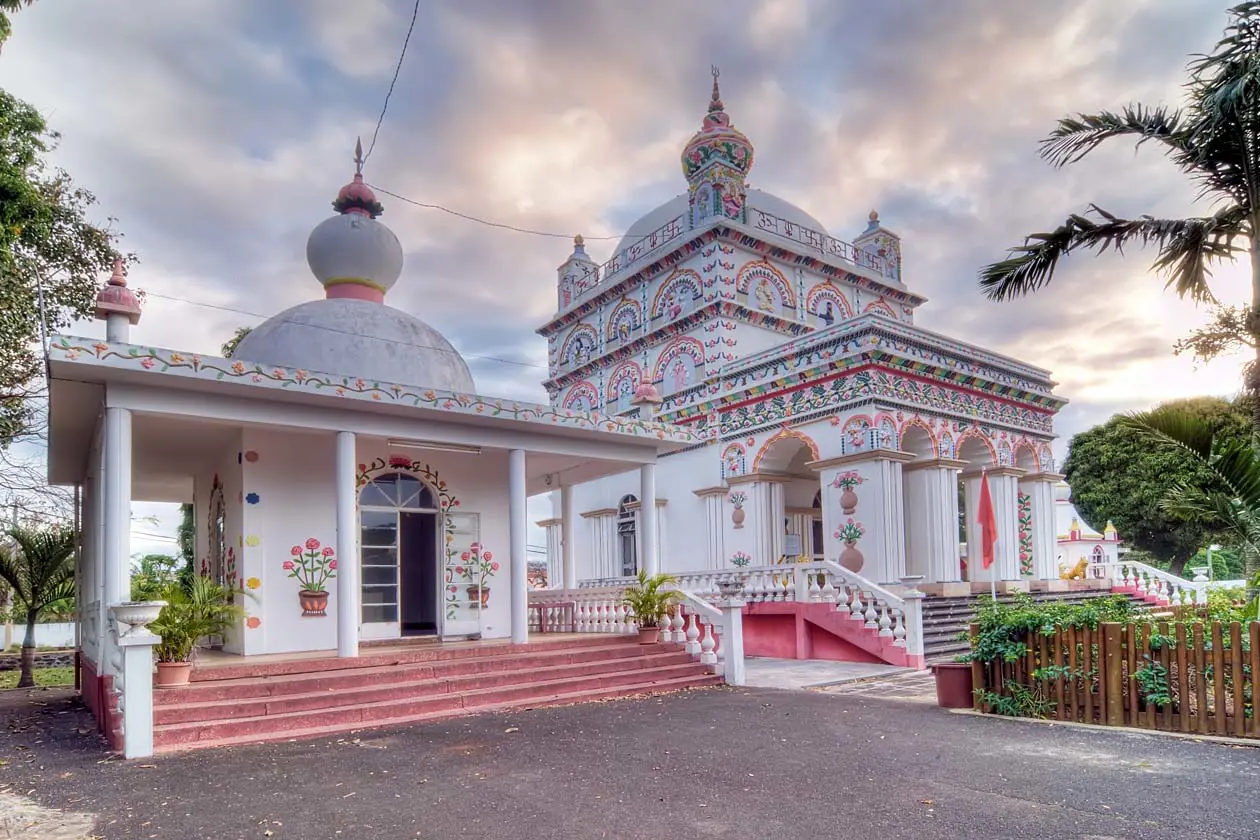
The main architectures of Mauritius tell the styles and stories of the different colonial identities that have settled on the island: Dutch, French, British, Chinese, African and Indian communities. Each one tells a story wrapped in charm and emotion.
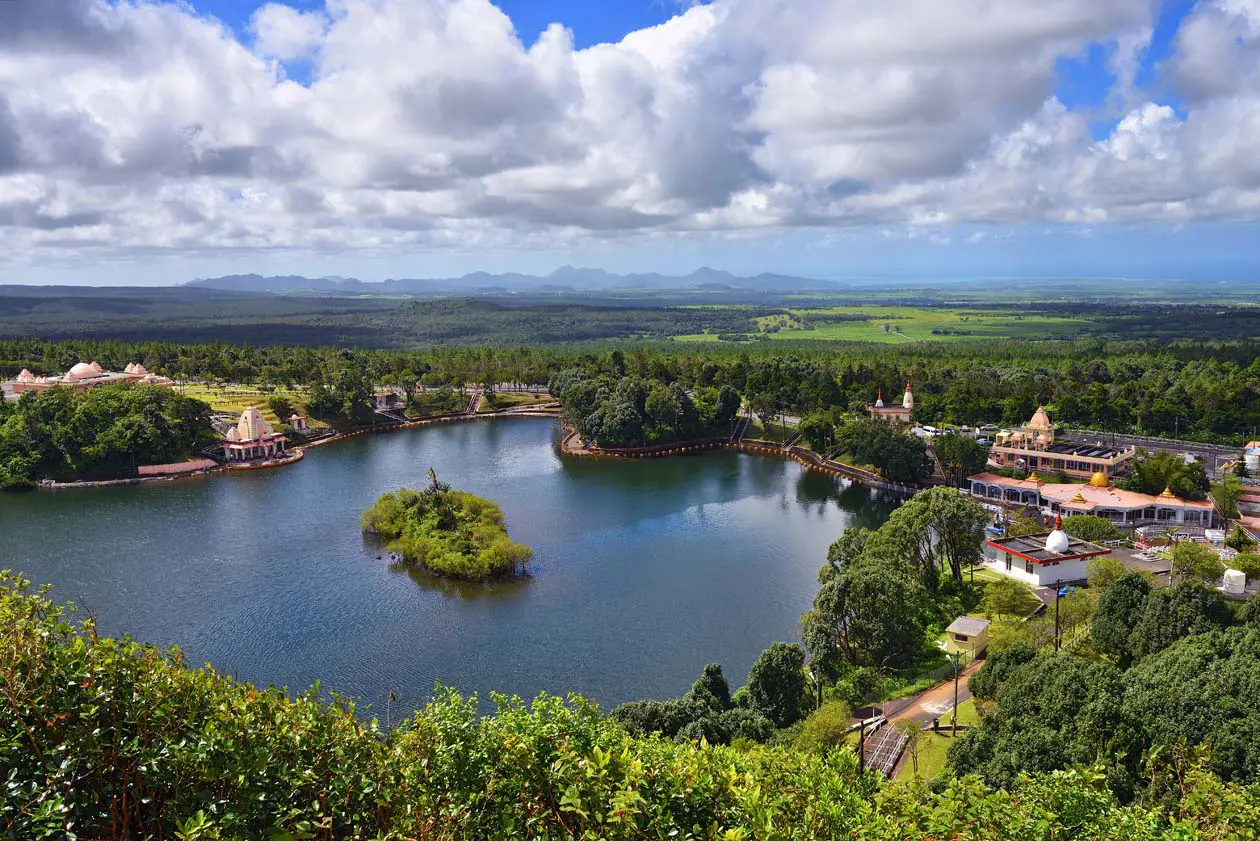
The National Parks
There are three National Parks that are absolutely worth exploring. The Black River Gorges Park, the largest on the island, is a natural sanctuary with lush hills, rainforests, endangered species and the Tamarin waterfalls including the Cascade de Chamarel, the Eau Bleue, the Cascade Mamzelle and the Cascade Léon where you can picnic or swim.
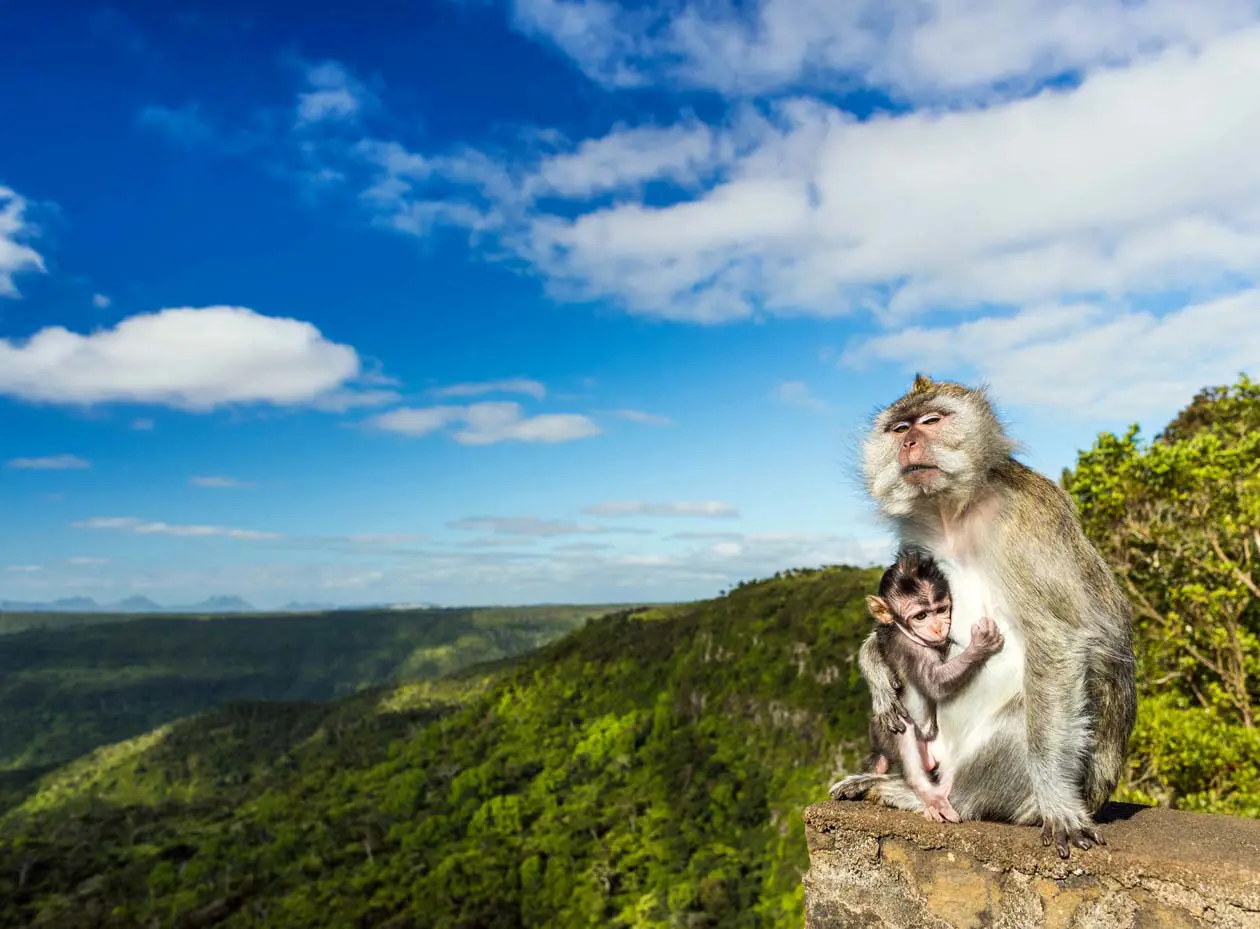
The Bras d'Eau Park in the northeast is home to rare botanical species including varieties of giant ebony and trails through historic ruins, rare orchids, ferns and wildlife. The Islets Park includes eight of the 49 islets that surround Mauritius, including Île d'Ambre, the largest (140 hectares), which is covered with mangroves, brightly coloured flowers, palm trees and pines and can be reached by boat or kayak. Smaller ones include the Île aux Flamants, a dreamy little white sandbar off the east coast, and Pigeon Rock on the north coast.
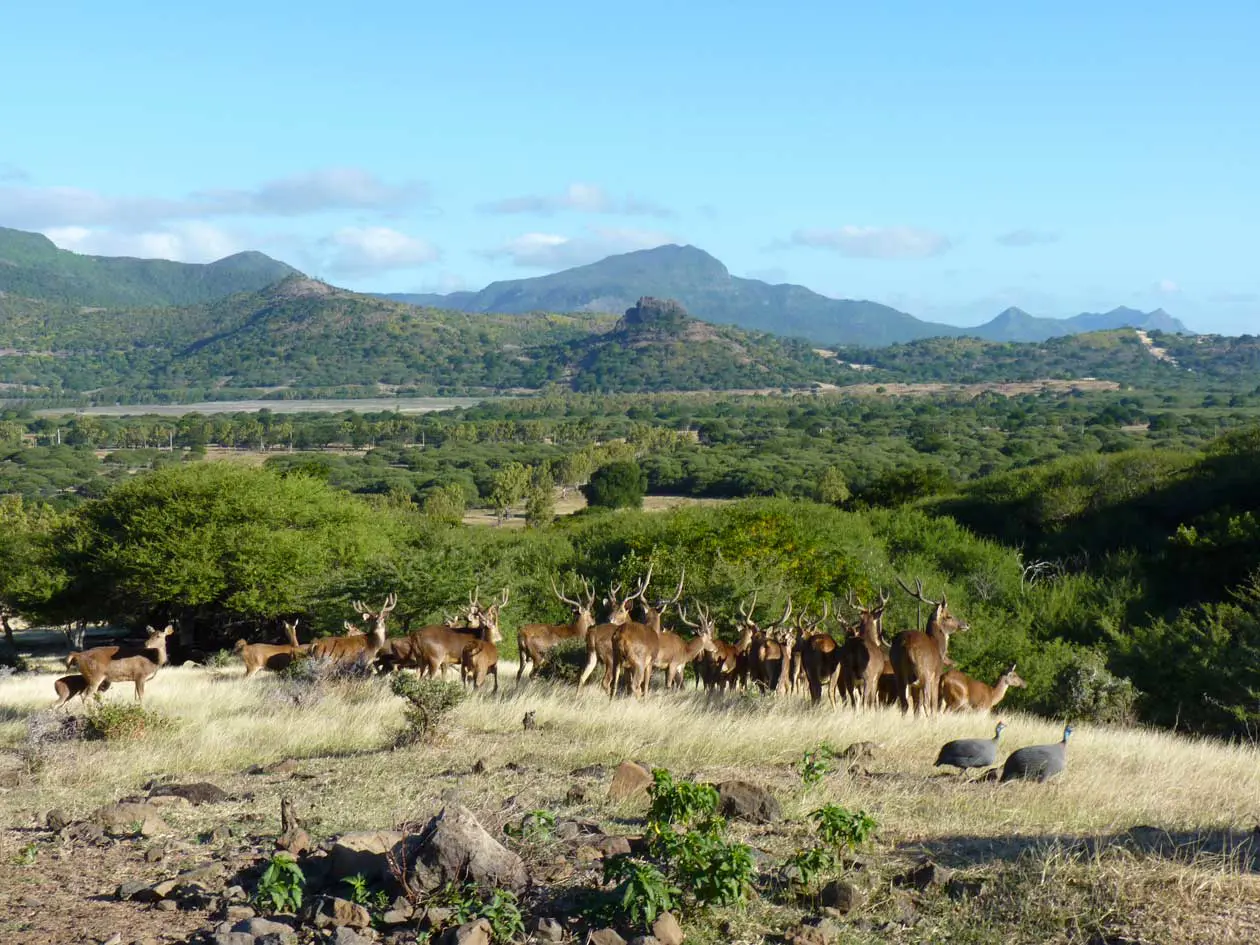
The Nature Reserves
Mauritius' nature reserves deserve a special mention: the Ebony Forest protects local biodiversity and offers special excursions via an elevated walkway through the tropical forest or on jeep safaris. The Bel Ombre Nature Reserve, a UNESCO Biosphere Reserve, allows quad excursions or safaris among rare species such as the Echo Parakeet, the Mauritius Kestrel or the pink pigeon. Marine life is the protagonist of tours to spot dolphins, sperm whales and humpback whales (between June and September), or boat itineraries dedicated to birdwatching on the northern islands and the giant tortoises of Aldabra in the François Leguat Reserve on Rodrigues Island.
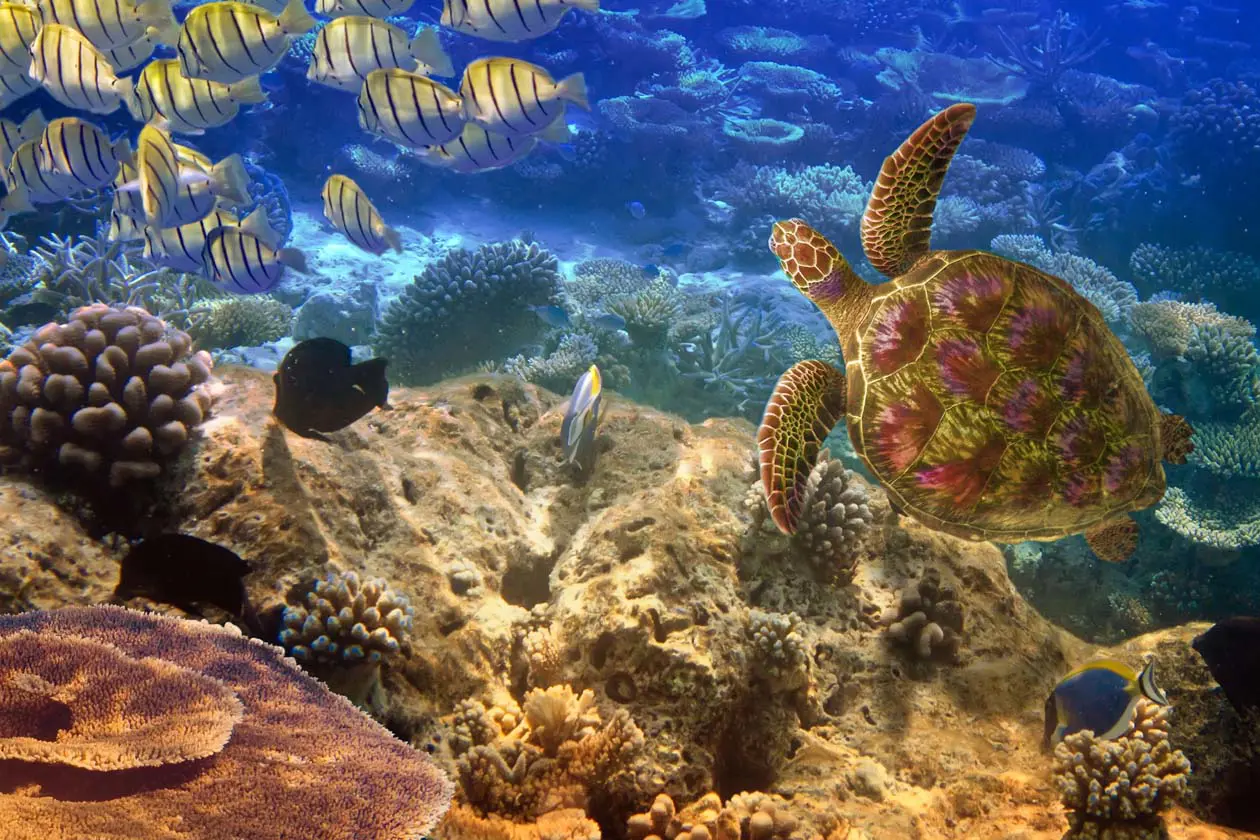
There is no shortage of experiences related to agriculture with visits to the tea plantations and the Bois Chéri Museum which illustrates its history or the Corson Tea Estate (a family business that has been producing tea since 1886), or walks through the sugar cane crops with a visit to the Museum and the Sugar Factory.
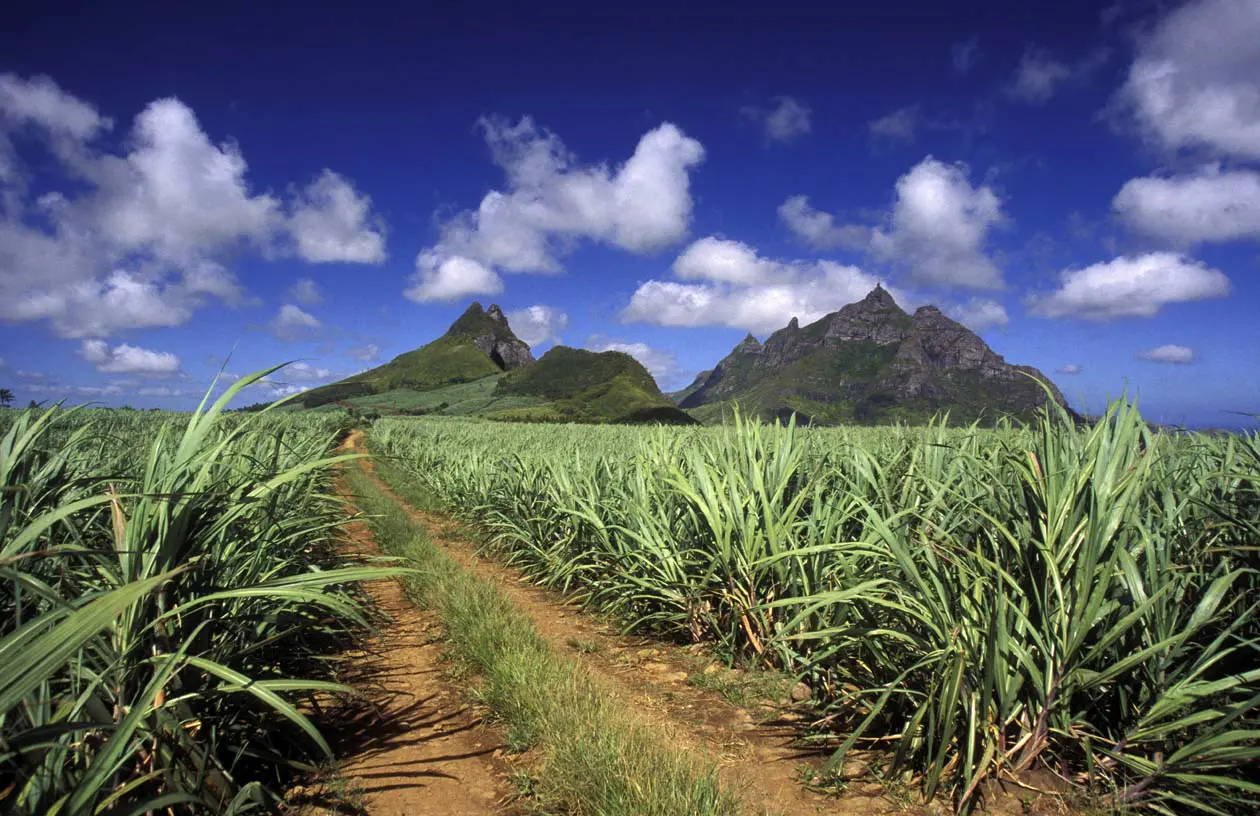
Rodrigues Island
The small island of Rodrigues, 550 kilometers to the east and reachable by flight from Mauritius in an hour and a half, is a corner of unspoiled paradise with isolated and enchanting beaches such as the one that can be reached by walking along the coastal path to Trou D'Argent. Of particular beauty is the François Leguat Reserve which is home to giant tortoises, native forests and tropical birds. Beaches, coral reefs, diving and snorkeling sites, hilly paths and small islands such as Île aux Cocos are perfect for those seeking adventure, sea and relaxation. The gastronomy on Rodriguez Island is a discovery: ourite (octopus), rougaille sausage, kono-kono salad, red bean soup and papaya cake accompanied by the festive music of the Sega Tambour dance, a traditional expression of the island.
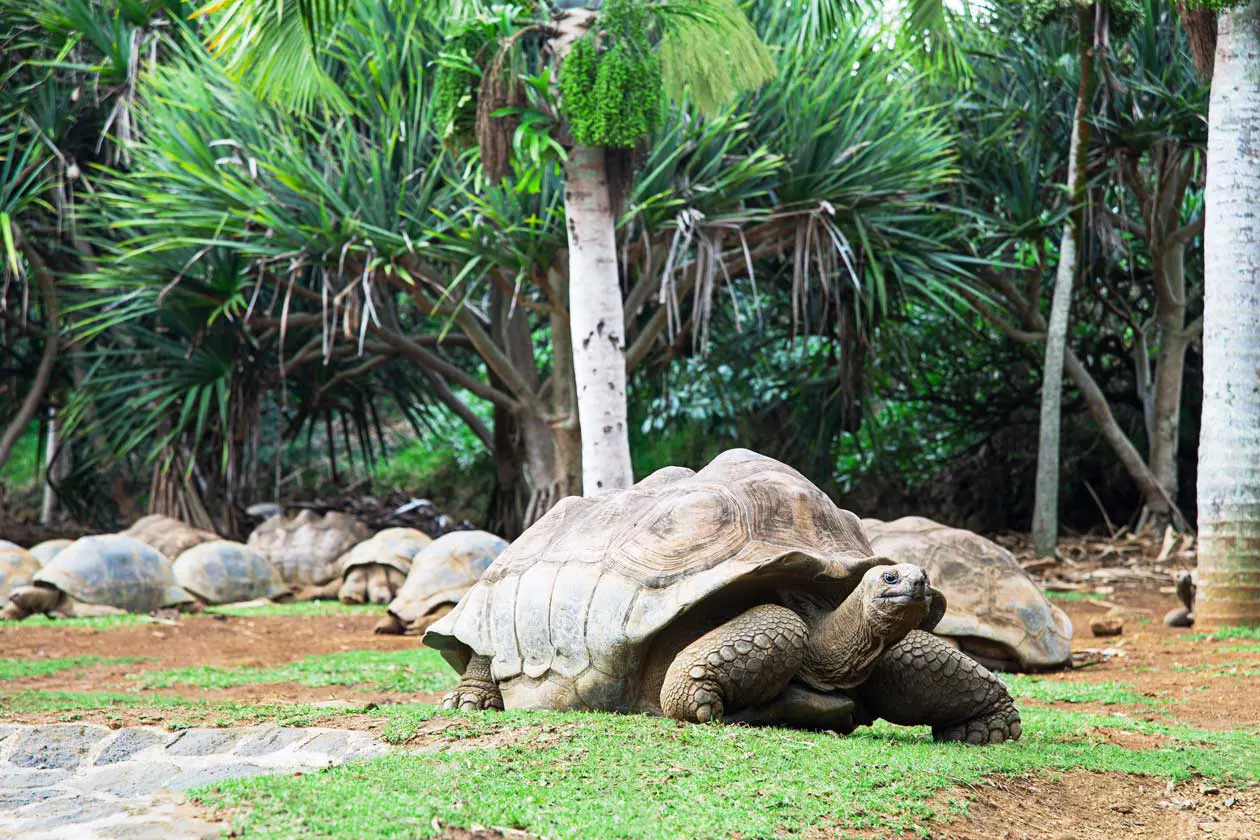
Mauritius cuisine
Mauritius' gastronomic offer reflects its cultural diversity: Indian, Chinese, African and European, creating a range of flavors. To taste street food, dholl puri served with curry (flatbread with yellow peas and spices), Bol Renversé (rice, vegetables, meat or fish with fried egg on top), spicy biryani (rice, spices and meat), fried noodles, Chinese noodles, boulette (steamed dumplings stuffed with meat or fish) served in broth with vegetables and noodles, Gateaux Piments (pancakes with peas, coriander and chilli), fish vindaye, jamalac with salt and chilli, poudine mais dessert (corn flour, milk, spices and grated coconut), sweet pastries, Neapolitan (shortcrust pastry with jam) and, of course, fresh fruit from the island of a thousand colours.
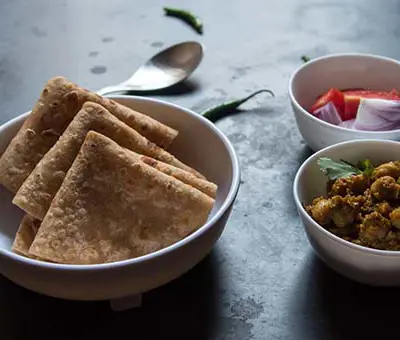

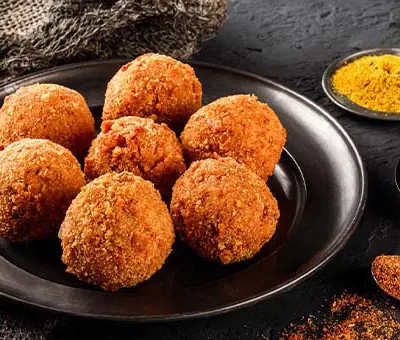
Also worth trying are the typical drinks of the island such as lychee wine, the drink alouda (sweet and creamy), local beer, a rum arrangé or rum from the Rhumerie de Chamarel distillery. You can dine in a refined way in the luxury hotels and resorts and in the various independent restaurants on the island.
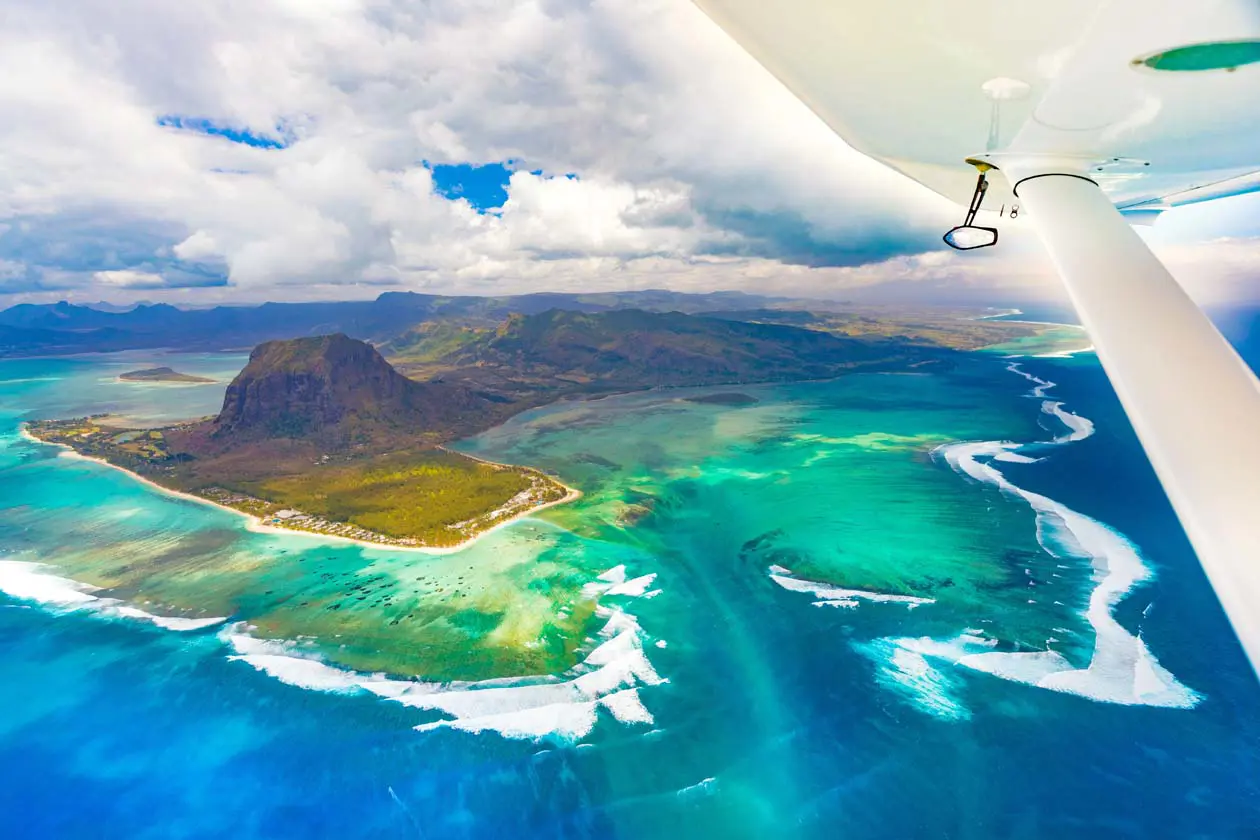
All that remains is to leave to reach this dream destination that leaves an indelible memory in the soul. Sir Seewoosagur Ramgoolam International Airport (MRU) is located in Plaine Magnien in the southeast of the island, about 50 minutes from Port Louis. It is the only international airport and welcomes over 4 million passengers a year, with direct flights from major cities around the world such as London, Paris, Johannesburg, Kuala Lumpur, Perth and Dubai.
Texts by Alisè Vitri - Avion Tourism Magazine
Photo for editorial use only: Copyright © Sisterscom.com / Depositphotos
All rights reserved. Reproduction is prohibited.
Advertising
Discover Mauritius starting from Milan Bergamo
From Milan Bergamo airport it is possible to reach Mauritius with a comfortable continuation flight made flydubai and a short stopover in Dubai.
AIRLINES | OUTBOUND | FLIGHT | RETURN FLIGHT |
|---|---|---|---|
flydubai | DUBAI | Transit at the airport of 6h 35 minutes | 2h e 25 minutes airport transit |
Check the flight schedule for Dubai and book your trip to Mauritius and discover a multi-ethnic paradise, between dream beaches and sacred mountains, where culture, nature, and adventure blend together in an unforgettable experience.
Partnership with Booking.com / Travelpayouts
Where to stay in Mauritius
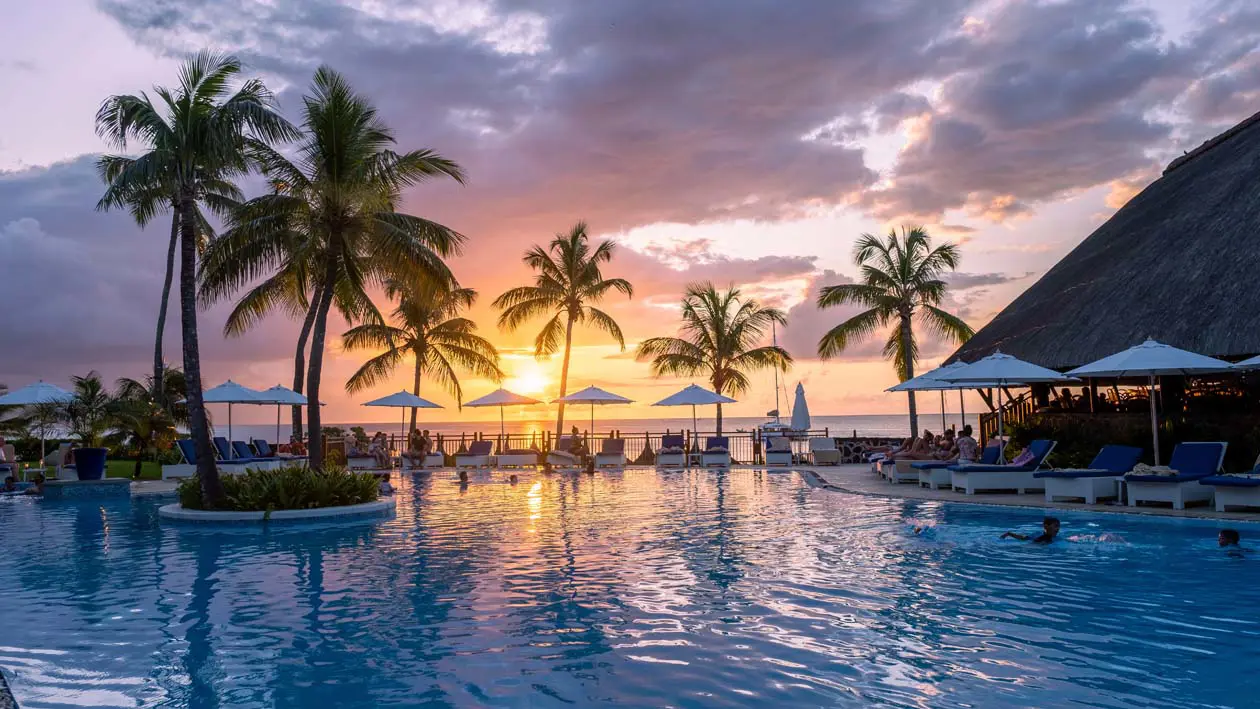
Mauritius offers endless possibilities for accommodation in facilities equipped with the best services.
To find the ideal resort or hotel and the best offers, you can search by stars but also by interest.
TOURS AND EXCURSIONS IN MAURITIUS
Mauritius offers a wide variety of tours and excursions that allow you to discover its authentic soul between nature, culture and crystal clear sea. Catamaran and boat trips lead to paradise islands such as Île aux Cerfs or Ilot Gabriel, with stops for swimming, snorkeling or relaxing on the beaches. In the western part of the island, it is also possible to spot dolphins.
For lovers of trekking and nature, excursions in the National Parks - such as the Black River Gorges or the protected Ebony forest - offer spectacular landscapes, paths between waterfalls and rare species, as well as extraordinary views from the top of Le Morne Brabant or Mount Le Pouce. Nature and jeep tours allow you to explore reserves such as the UNESCO-listed Bel Ombre and the mangrove-surrounded Île d'Ambre.
Those curious about the local culture can take guided tours of Port Louis, including markets, museums, pagodas and street art, or visit religious sites such as the sacred lake Ganga Talao and the most important Hindu temples on the island. Food and wine tours are also available between tea, sugar plantations and rum distilleries. Finally, an excursion to Rodrigues Island allows you to experience a wilder side of the archipelago, including giant tortoises, diving and hilly excursions. All memorable experiences that enrich your holiday in Mauritius.
Partnership with GetYourGuide
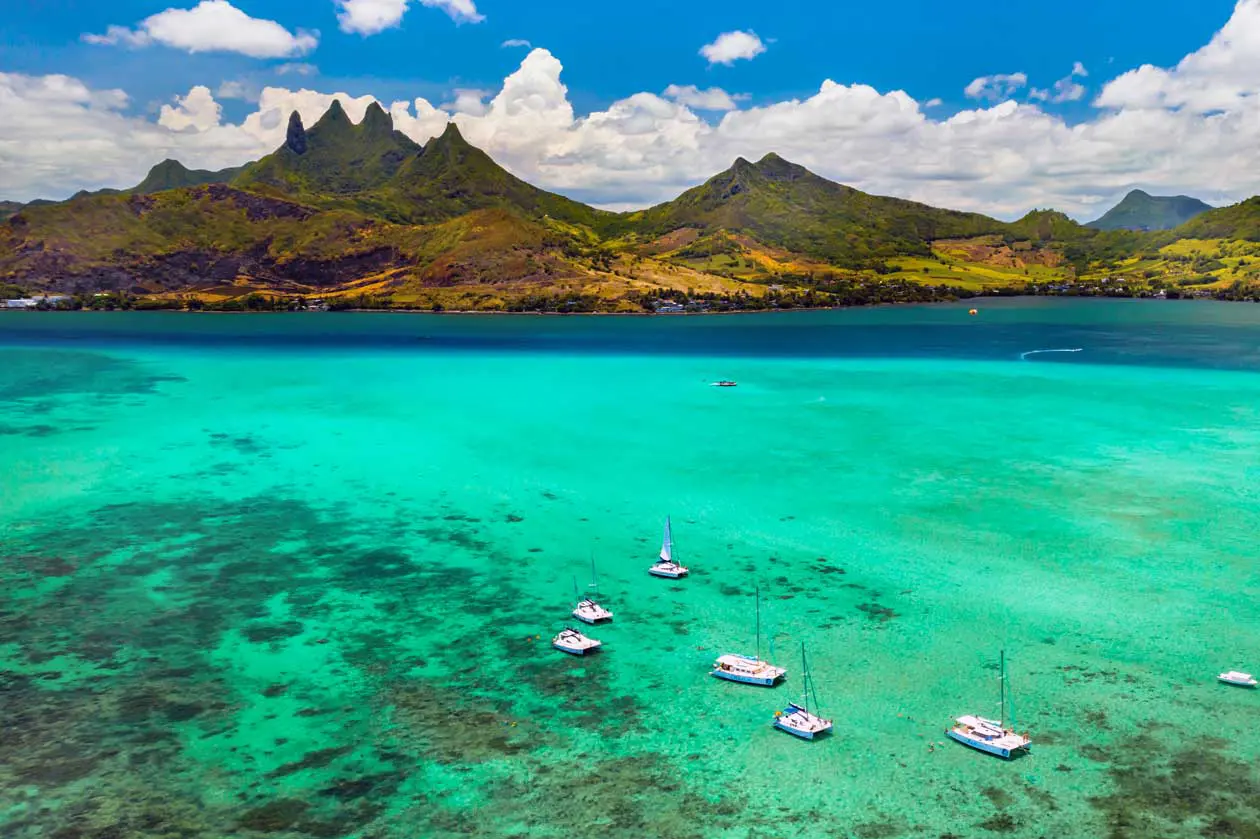
Catamaran cruise to the North Islands of Mauritius
Day trip to the northern islands of Mauritius with catamaran cruise among nature reserves, white sand beaches and crystal clear waters. Tea, coffee, cake and lunch on the catamaran Wind Dancer. Departure from Grand Baie beach. Visit of Flat Island and Gabriel Island, return to Grand Bay with a stop at the natural aquarium of Coin de Mire. Swimming and snorkeling among reef fish. Shared or private options. Duration: 8 hours. Free cancellation up to 24 hours in advance. Book now.
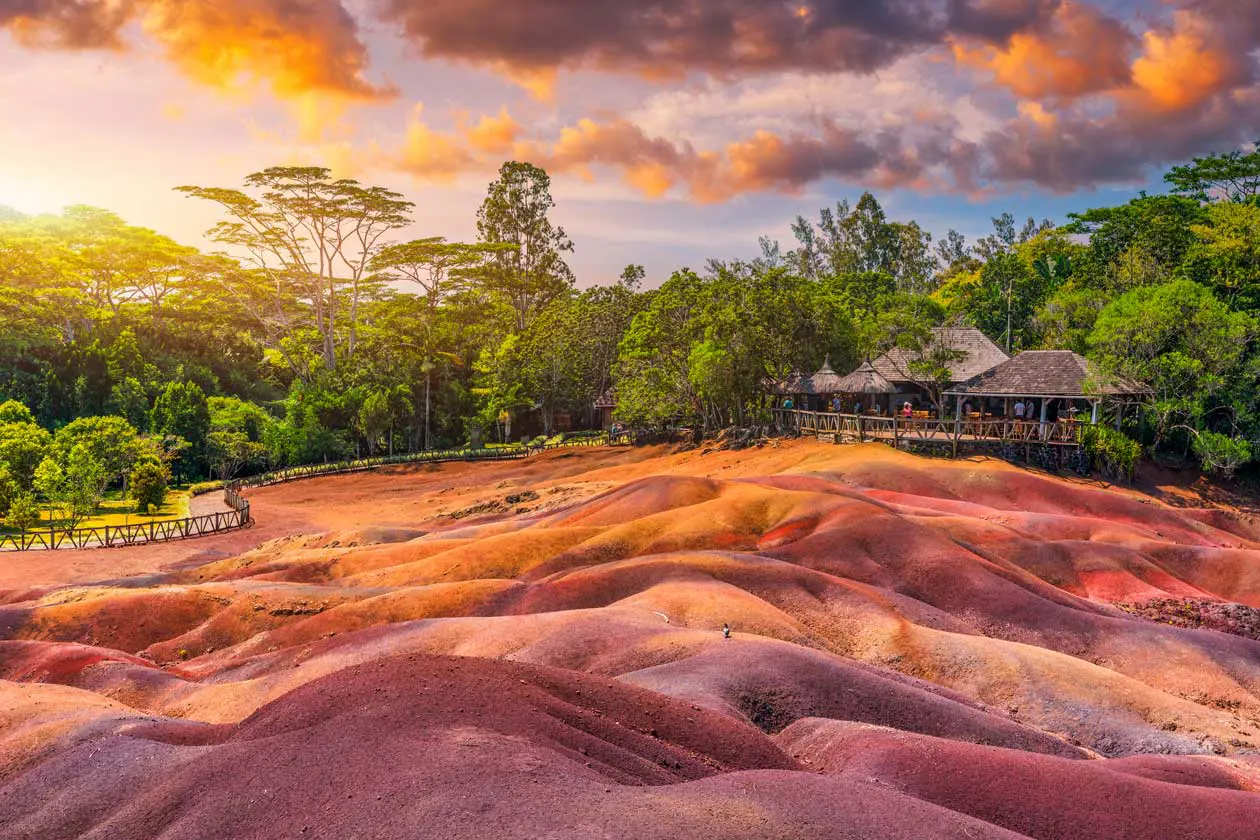
Tour of the South-West of Mauritius
Pick up at your hotel and depart to visit the town of Curepipe and Floreal, the crater of Trou aux Cerfs, the Hindu temple of Grand Bassin. Continue to the Black River to admire landscapes and mountains. Finally in Chamarel to visit the Chamarel waterfalls, the Park of the Seven Lands colored with giant tortoises. Stop at a Mauritian restaurant. Included: transportation, tour guide (English and French), entrance fees (Chamarel Falls, Black River Gorges, Trou aux Cerfs, Alexandra Falls, Sacred Lake), lunch and drinks. Duration: 7 hours. Free cancellation up to 24 hours in advance. Book now.
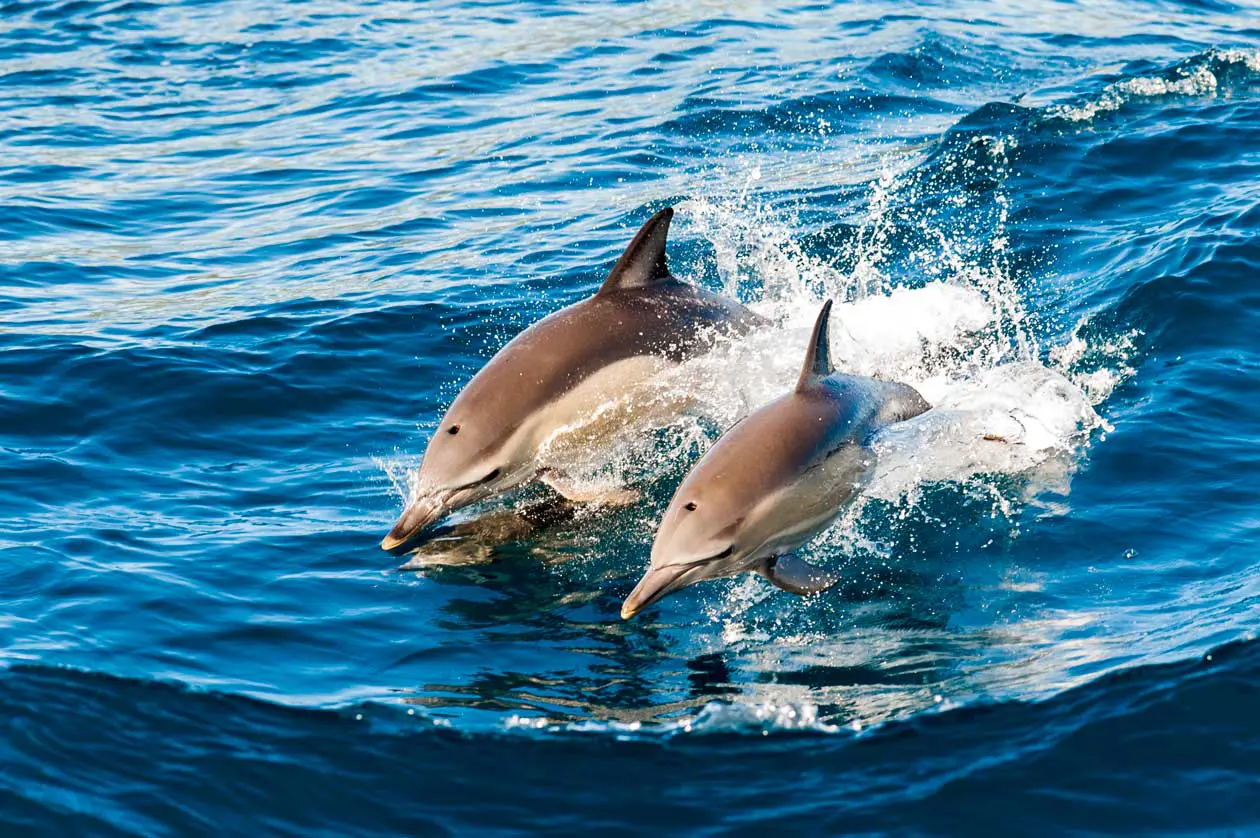
Île aux Bénitiers and snorkeling with dolphins
Included in the tour: pick-up and drop-off at any accommodation in Mauritius; barbecue lunch at the islet of Benitier (vegetarian or not); water and local beverages (alcoholic and non-alcoholic); private transportation in an air-conditioned vehicle; qualified guide and driver; speedboat cruise; snorkeling equipment at Crystal Rock; encounters with dolphins in the South-West Lagoon. Duration: 7 hours. Free cancellation up to 24 hours in advance. Book now.
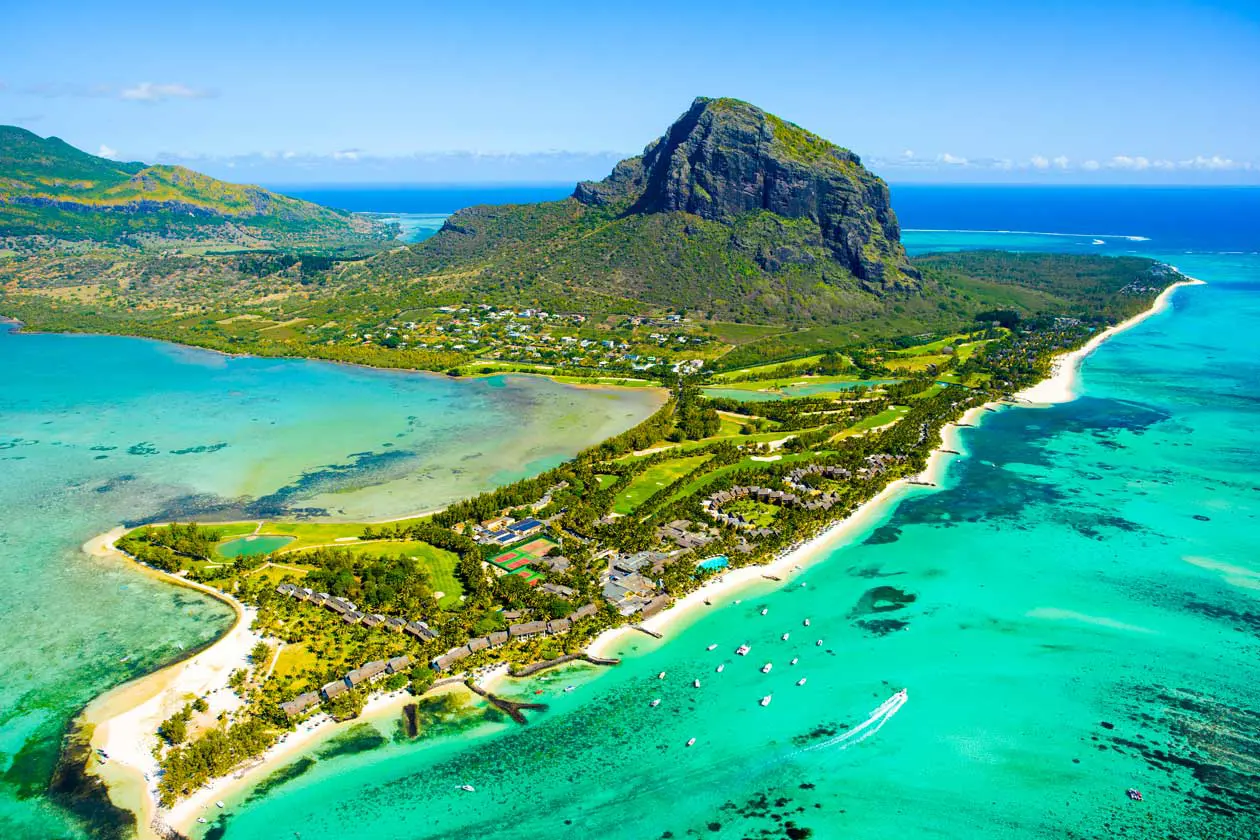
Hiking on the Mountain of Le Morne
Hike with a certified local guide from the village of Le Morne to reach the top of one of the most iconic mountains on the island of Mauritius: Le Morne Brabant, a UNESCO World Heritage Site. Guides licensed by the Mauritius Tourist Board. 1st section: winding path leading to a viewing platform. 2nd section: moderate climbing on rocky terrain. At the top: 360° view of the turquoise lagoon and the Mauritian coast. Moderate fitness level. Can also be booked separately (1st or 2nd leg). Duration: 4 hours. Free cancellation up to 24 hours in advance. Book now.




